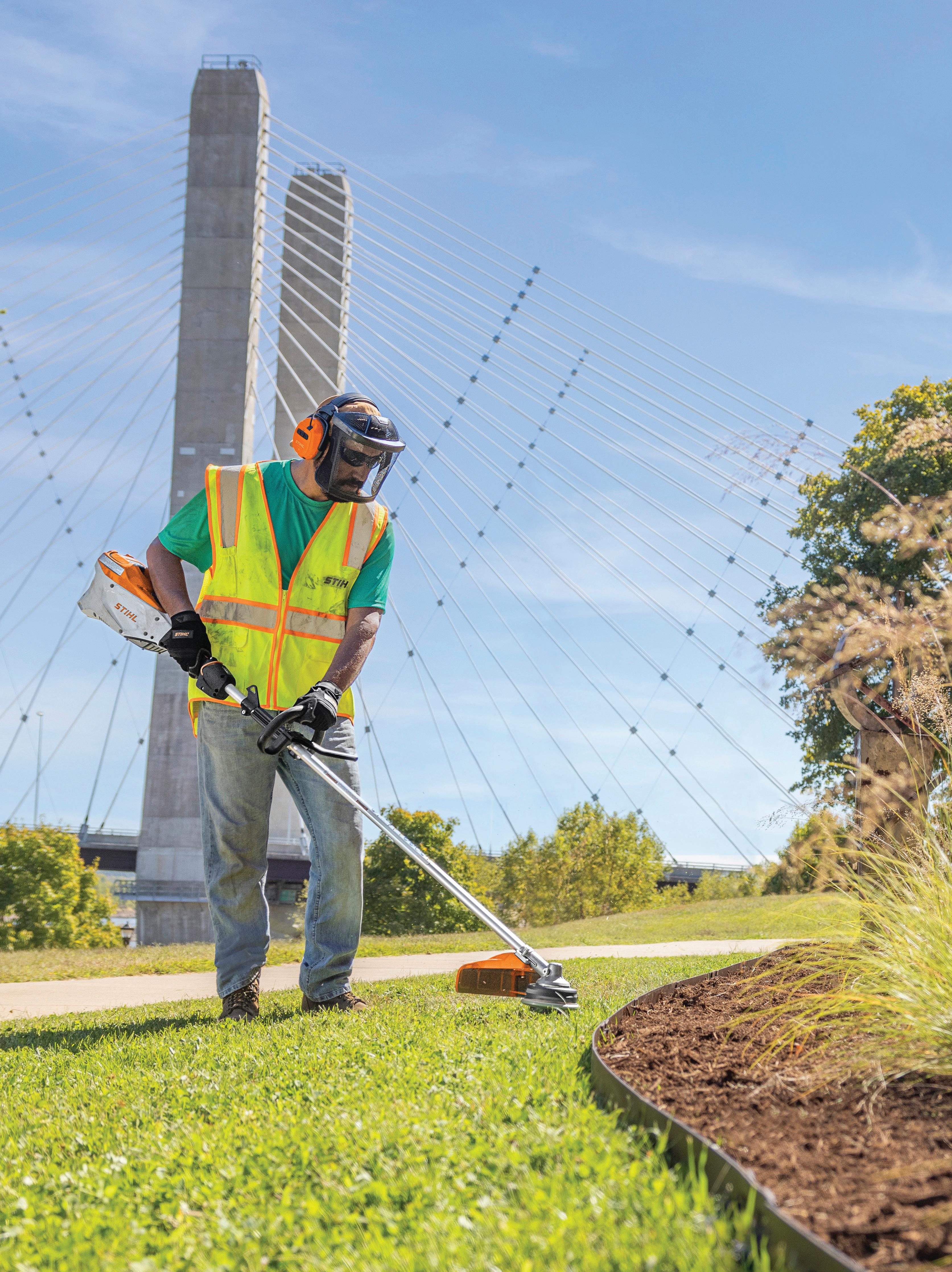ELECTRIC AVENUE
LANDSCAPE CONTRACTORS DISCUSS THEIR EXPERIENCES USING BATTERY-POWERED EQUIPMENT.

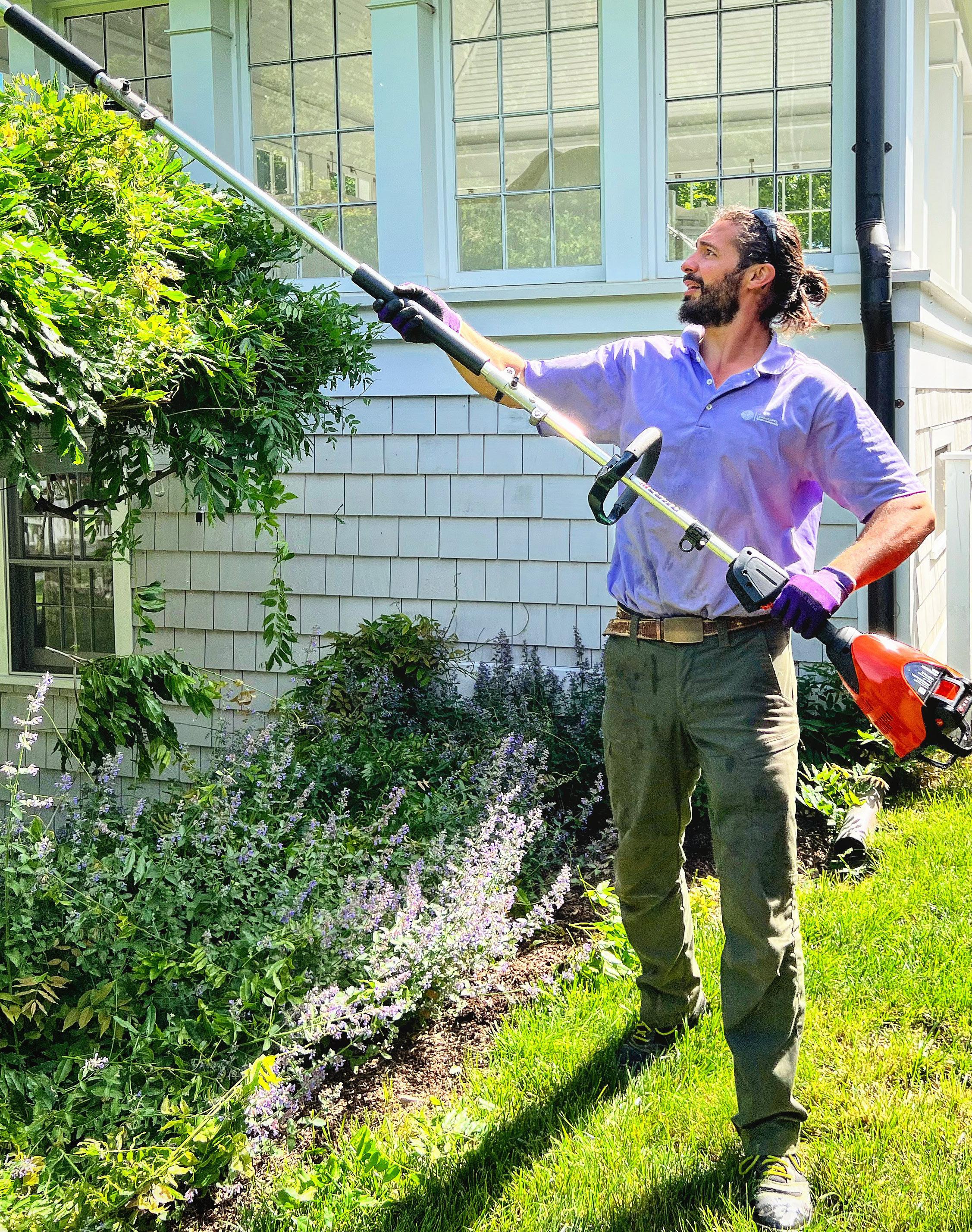
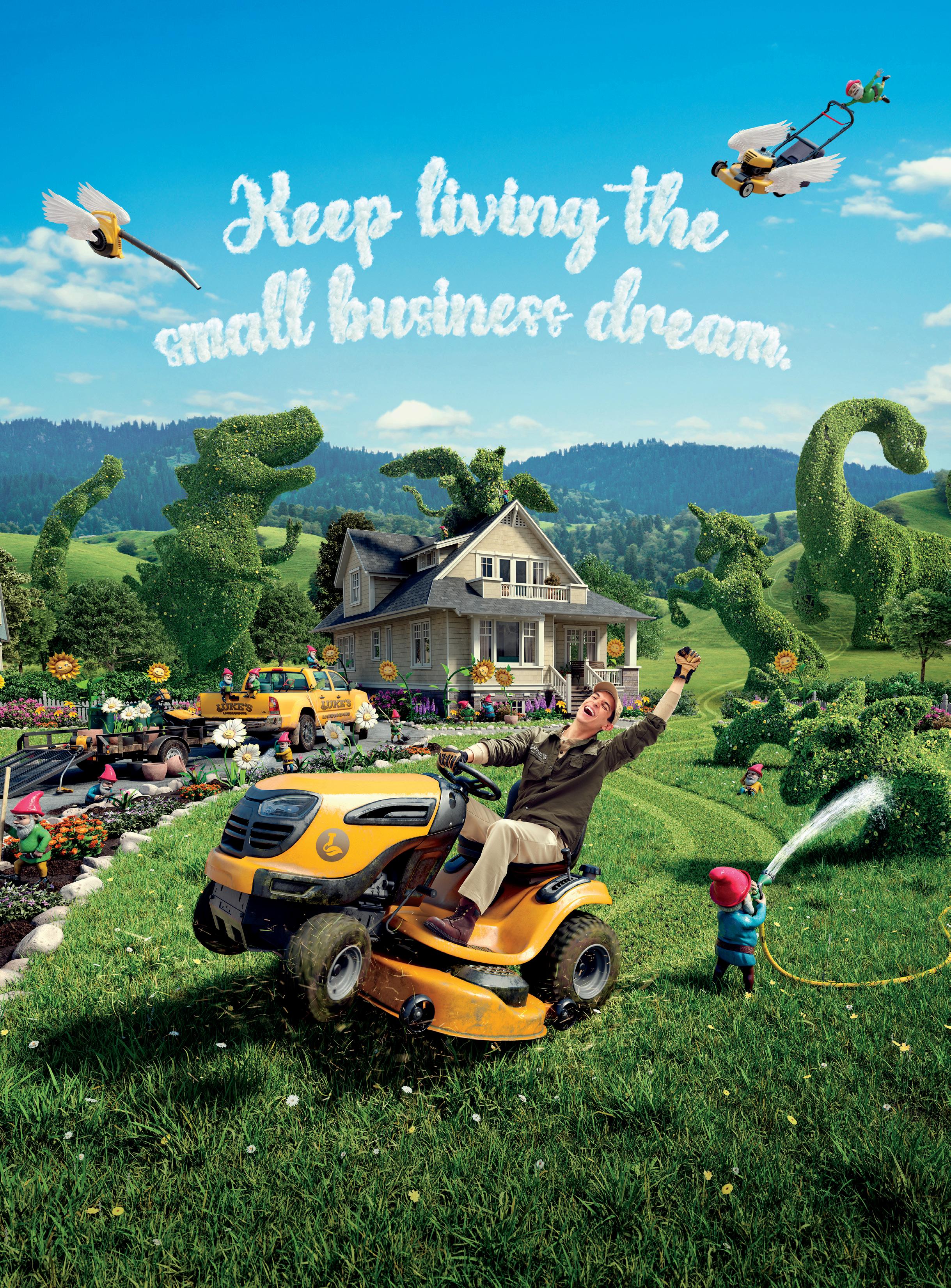


DEPARTMENTS
18. BUSINESS MANAGEMENT | THE LOWDOWN ON SOFTWARE
Software experts provide information on what landscape companies should look for when choosing a business management software.
20. LAWN CARE | PREVENT TURFGRASS DISEASE
Lawn care operators should be aware of these five turfgrass diseases to watch out for this spring and learn how to treat them.
22. MOWING & MAINTENANCE | THE SCOOP ON STAND-ONS
What landscape contractors should know when it comes to the latest technology of stand-on mowers.
23. EQUIPMENT & TECHNOLOGY | PROTECT YOUR ASSETS
How GPS and fleet tracking technology can protect landscape companies’ equipment and streamline their operations.

26. HARDSCAPES & DESIGN | WHAT TO KNOW ABOUT DESIGN SOFTWARE
Design software experts discuss how landscape companies can use design software to their advantage and the easiest ways to onboard it.
28. LIGHTING & IRRIGATION | OUTDOOR LIGHTING TRENDS
Staying up to date with the latest outdoor lighting trends and selling points is essential. Here’s how to do it.
12. Powered Up: The Scoop on BatteryPowered
Solutions
Landscape contractors from around the country relay their experiences using batterypowered equipment, discuss what inspired them to start using it and provide advice for others in the industry looking to make the switch.
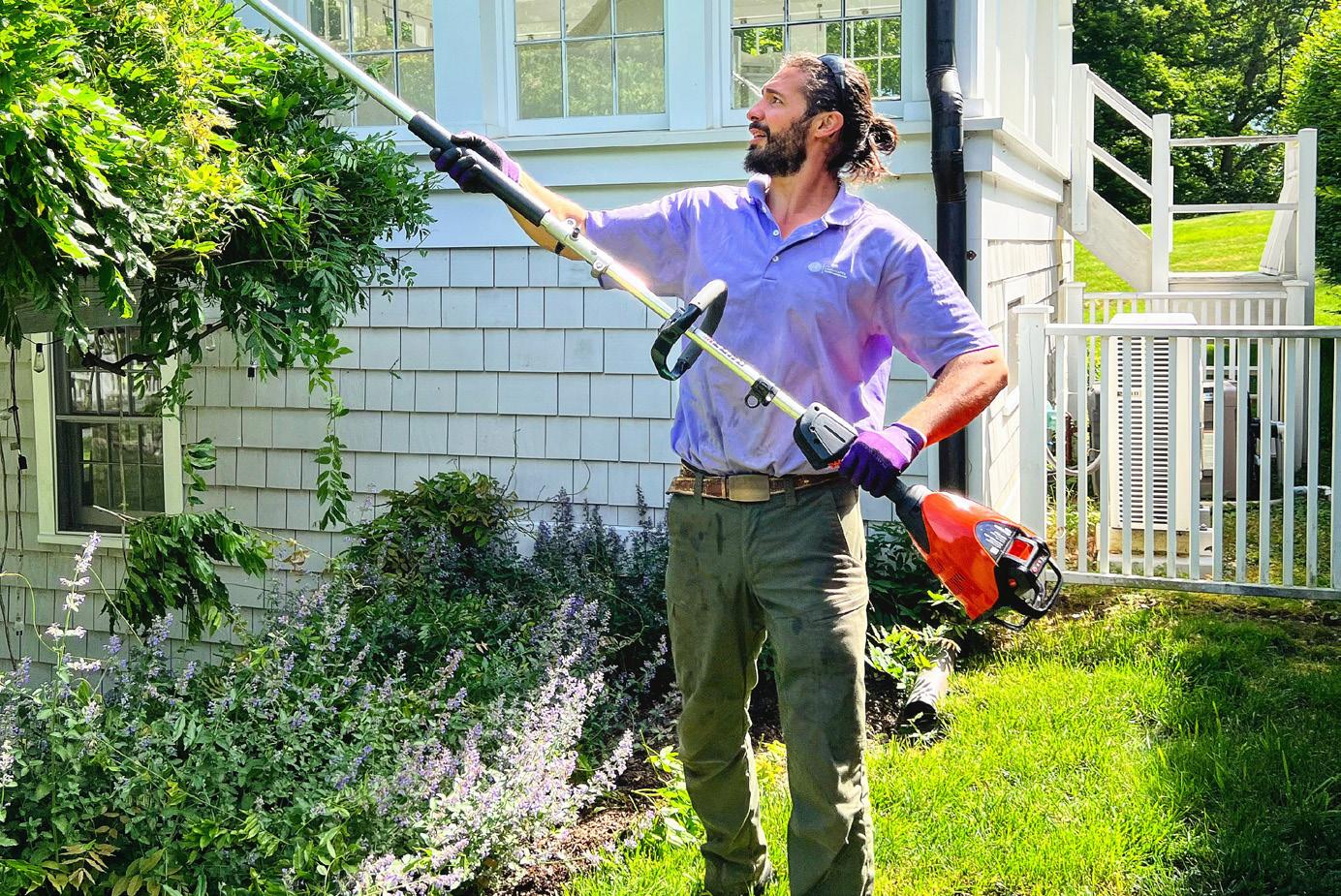
04. EDITOR’S NOTE
06. DIGITAL HITS
08. FRESH CLIPPINGS
30. PROJECT PROFILE
32. CONTRACTOR PROFILE
34. NEW PRODUCTS
IN WITH THE NEW?
Battery power, alternative fuel sources, electrification—whatever you call it, talk about this trend isn’t going away anytime soon.
Based on recent conversations I’ve had with manufacturers and contractors at industry trade shows, events and over the phone, it seems as if the green industry is finally starting to put some stock into the power of batteries to get the job done.
Sure, there are still skeptics, but what new technology hasn’t encountered doubters?
I remember my first GIE+EXPO (now Equip Expo) when this type of technology was just starting to be talked about as a potential option. Questions about run time and power output swirled around nearly every conversation, doubts that this technology could power the hard work the green industry performs at the back of everyone’s minds.
While there is still work to be done, manufacturers have made many advancements with this technology, and amid new regulations and customer preferences, it may just be time to start taking this trend seriously.

So, what do you say? Are you in with the new? Check out our story on p. 12 to find out why some landscapers are saying yes and embracing the new technology.
Speaking of being in with the new, in addition to our coverage on battery
power, our business management department digs into software that helps landscapers streamline operations, reduce labor and become more efficient overall (p. 18); our equipment and technology department lays out how landscape companies can make use of GPS technology and telematics to keep their fleets in working order (p. 23); and our irrigation and lighting department lists several new outdoor lighting trends to keep an eye on (p. 28).
Have you recently adopted any battery-powered equipment or new software and technology? Are you thinking about it? Why or why not? I’d love to hear your thoughts—and I’m sure your fellow readers would to. Email your ideas to swebb@acbusinessmedia. com or connect with me on LinkedIn by following the QR code below.
And be sure to look out for next month’s issue, where we will present our annual Women In The Green Industry Award. This is the second time we will be presenting the award, and having parsed through many of the entries already, I can tell you that this year’s nominees represent quite the bunch of powerhouse women taking the green industry by storm.
Until next time!
https://gpros.co/bkgb3v
EDITORIAL
Editor Sarah Webb swebb@acbusinessmedia.com
Managing Editor Gigi Wood gwood@acbusinessmedia.com
Associate Editor Emry Lloyd elloyd@acbusinessmedia.com
Technology Editor Charles Rathmann crathmann@acbusinessmedia.com
AUDIENCE
Audience Development Manager Angela Franks
PRODUCTION
Senior Production Manger Cindy Rusch crusch@acbusinessmedia.com
Art Director Willard Kill
ADVERTISING/SALES
Brand Director Jason DeSarle jdesarle@acbusinessmedia.com
Sales Representative Megan Perleberg mperleberg@acbusinessmedia.com
Sales Representative Sean Dunphy sdunphy@acbusinessmedia.com
Sales Representative Nikki Lawson nlawson@acbusinessmedia.com
Sales Representative Kris Flitcroft kflitcroft@acbusinessmedia.com
AC BUSINESS MEDIA
Chief Executive Officer Ron Spink
Chief Financial Officer JoAnn Breuchel
Chief Revenue Officer Amy Schwandt
Chief Digital Officer Kris Heineman
VP, Audience Development Ronda Hughes
VP, Operations & IT Nick Raether
Content Director............................................... Marina Mayer
Director, Online & Marketing Services Bethany Chambers
Content Director, Marketing Services Jess Lombardo
Director, Demand Generation & Education Jim Bagan
CIRCULATION & SUBSCRIPTIONS
P.O. Box 3605 Northbrook, IL 60065-3605 (877) 201-3915 | Fax: (847) 291-4816 circ.greenindustrypros@omeda.com
LIST RENTAL
Sr. Account Manager Bart Piccirillo | Data Axle (518)339-4511 | bart.piccirillo@infogroup.com
REPRINTS & LICENSING
Megan Perleberg mperleberg@acbusinessmedia.com
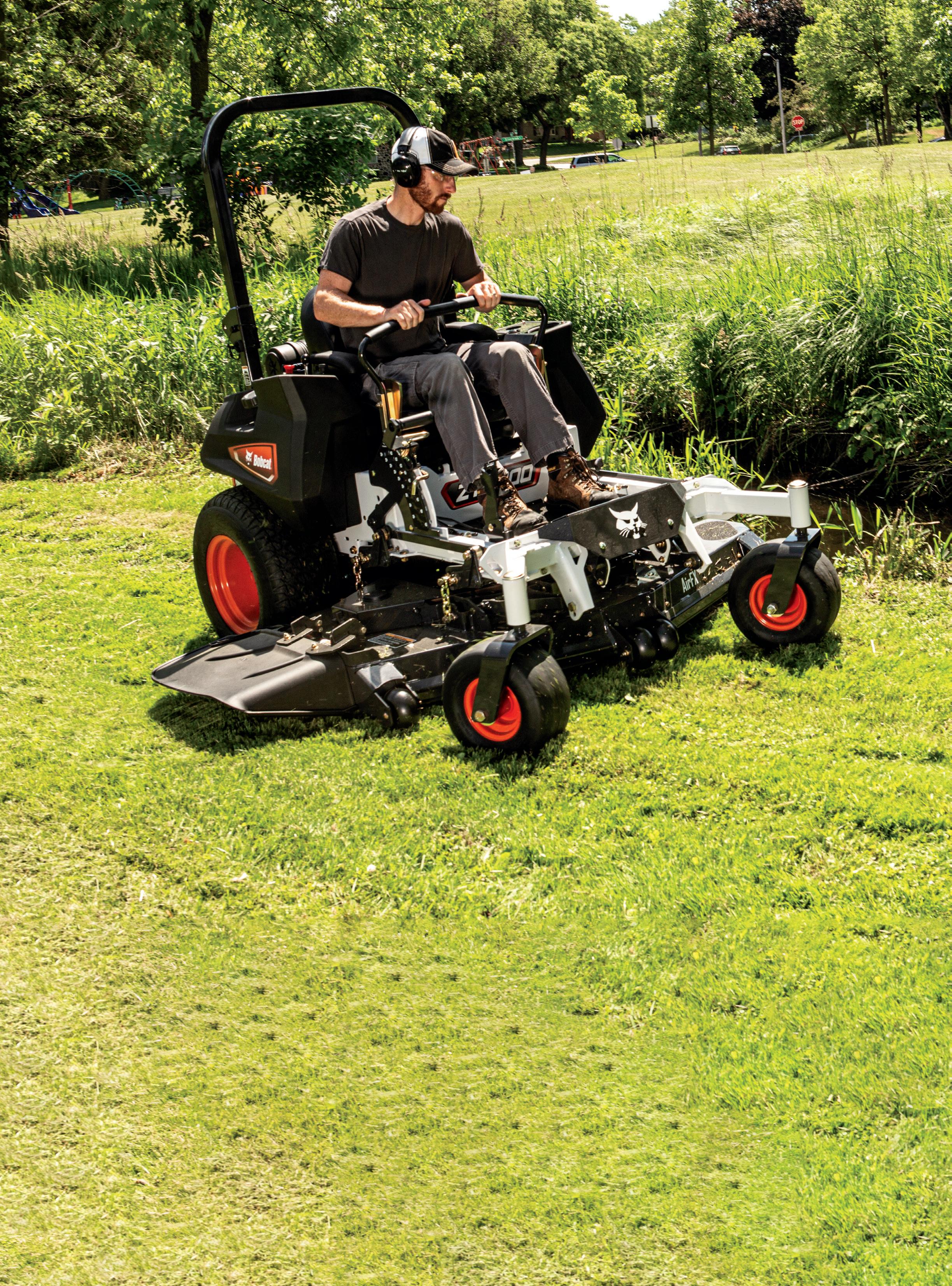

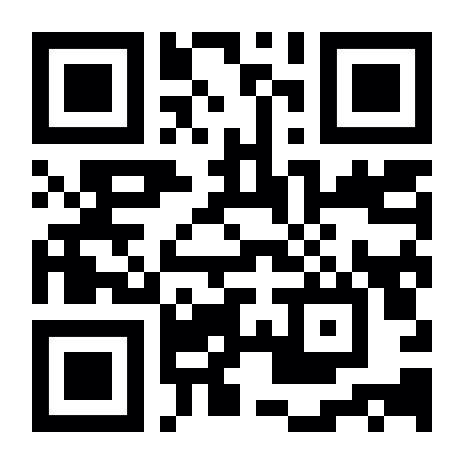
THE LATEST ONLINE
WOMEN IN GREEN

You may have already heard the buzz surrounding Green Industry Pros’ second annual Women In The Green Industry Award, and if you haven’t, be sure to follow the QR code below for last year’s article revealing the winners and profiling the overall winner: Linda Nelson, president of Greenscapes in Naples, Fla. Also, be on the lookout for the story with this year’s winners in our upcoming May/June issue.
https://gpros.co/n4rh48
NEWS YOU CAN USE
@ OneClic.adobe.stock.com
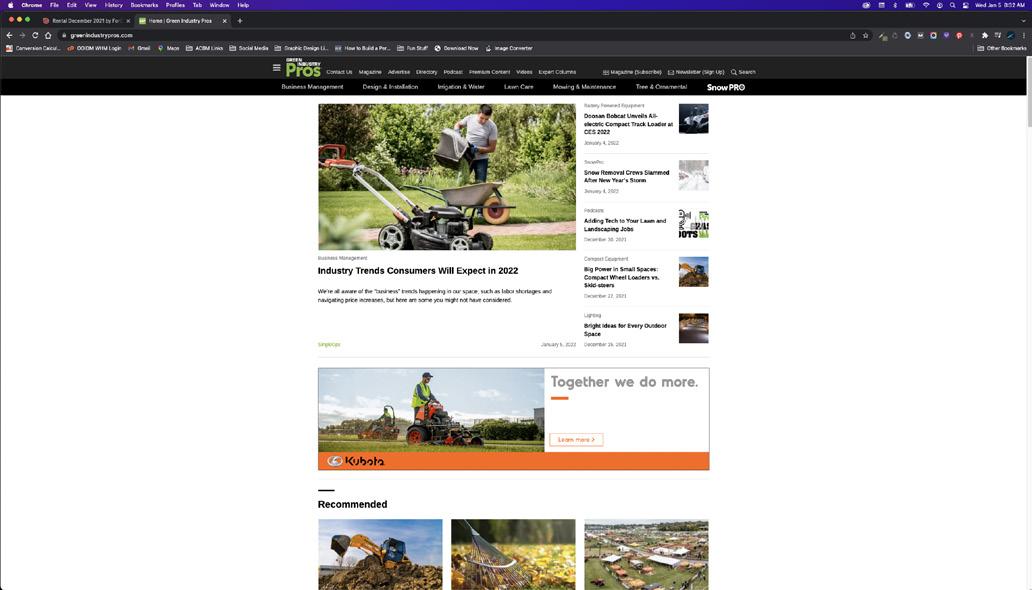
STAY SOCIAL
@Syifa5610.adobe.stock.com
Would you like to stay up to date on the latest happenings across the green industry but can’t wait for the next print issue of Green Industry Pros magazine to come out? Be sure to subscribe to our e-newsletters—including The Pro Report, The Tech Report and The Lawn Care Report, just to name a few—using the QR code, so you can stay informed on what’s going on around the industry.


https://gpros.co/y668un
To stay up to date on the latest happenings around the green industry, be sure to follow Green Industry Pros’ social media channels:


@greenindustrypros
@greenindustrypros
@greenindpros
youtube.com/GreenIndustryPros
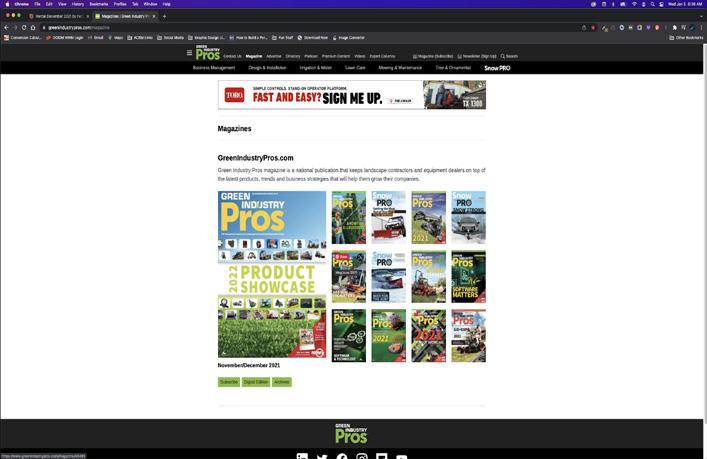
Industry Leading Lawn & Landscape Business Software

Bottom-line profits improved by 9% in the first year

Green Industry Roll Call: Updates from Steel Green Manufacturing, Bayscape Landscape Management and More
Steel Green Manufacturing Moves to a New Facility
Steel Green Manufacturing has begun production at its new facility in Lebanon, Ind. This new facility is 30,000 square feet, which is more than double the size of the previous facility it was located in. It is also only a minute away from its previous location.
“We’ve always been proud to say our machines are made in the USA,” said Brent Mills, co-founder and senior product specialist at Steel Green. “This new facility gives us room to continue building machines right here in Lebanon as we grow into the future.”
Bayscape Landscape Management Adds Crystal Springs Landscape
Bayscape Landscape Management acquired Crystal Springs Landscape, located in San Jose for more than 40 years. This acquisition was completed at the end of 2022. It has moved the team that was based in San Jose to a new facility in Alviso. Crystal Springs
Landscape and Bayscape Landscape Management are both family owned.
“Our track record of excellent performance and reliability during the past 25 years has allowed us to expand our award-winning company to over 100 employees,” said Bayscape President Tom Ellington. “Our acquisition of Crystal Springs Landscape enables us to increase our services to our combined Bay Area customers by incorporating its experienced team, equipment and expertise with our own. Together, we will continue to innovate, providing the unsurpassed landscape design and maintenance services that have made Bayscape Landscape Management a leader in the region.”
Scythe Robotics Secures Series B Financing
Scythe Robotics raised $42 million in Series B financing. This funding will help Scythe meet demand for the 7,500 reservations for its M.52 mower. This also brings the company’s total capital raised to $60.6 million. The
M.52 has a battery that is designed to mow all day on a single charge to keep up with the demands of landscaping professionals. This mower also has safety sensors so that if an animal or person steps in front of the mower, it will respond by turning off.
“Since launching from Stealth in June 2021, we’ve seen overwhelming interest from commercial landscape contractors in Scythe M.52 as a solution addressing both their crippling labor pains and their electrification needs,” said Jack Morrison, co-founder and CEO of Scythe. “We’re thrilled to expand our outstanding investor list, particularly with the addition of influential climatetech investors Energy Impact Partners and ArcTern Ventures, and secure more capital to scale and meet the phenomenal demand for M.52.”
Ruppert Landscape Opens New Location, Promotes Branch Manager
Ruppert Landscape has expanded its landscape management operations to include a new location in Washington, D.C. This branch joins several existing branches in the D.C. metro area, including Baltimore, Frederick, Forestville, Laytonsville, White Marsh, and Silver Spring, Md., and Alexandria, Dulles, and Gainesville, Va.
“Thanks to the hard work and dedication of our team and the loyalty and trust of our customers, we have been able to grow our presence, necessitating an additional branch,” said Doug Halsey, region vice president in the company’s landscape management division. “This market density will allow us to continue providing excellent service for our existing customers while supporting new growth in the region. Equally as important, it will allow us to provide more growth opportunities for our employees, which is part of our core values.”
This new location will be led by Chris Bixler who has been with Ruppert for more than a decade and was the branch manager in the company’s Silver Spring location.

“Chris has been an integral part of our history in the D.C. market. He helped establish our original D.C. branch five years ago and will be a huge asset as we create our new D.C. location,” said Halsey.
This move also provided an opportunity for Michael Moody to step into the role of branch manager in Silver Spring. He will be responsible for the overall welfare of the branch, including the safety and development of his team, strategic planning and budgeting, training, customer service and day-to-day operations. He holds a bachelor’s degree in horticulture from the University of Maryland and has more than a decade of landscaping experience. He joined the Ruppert team in 2015 as an enhancement crew member in Baltimore, Md., and has since worked his way up through the ranks to associate branch manager in the Silver Spring location and he was also presented with the 2021 Branch Impact Award.
“Michael manages with passion and energy and is always willing to go the extra mile for our employees and our customers,” said Halsey. “He’s gained a lot of knowledge during his time as an associate branch manager and is well prepared for this opportunity.”
Central Turf & Irrigation Supply Adds New Turf Category Director for Fertilizer
Central Turf & Irrigation Supply hired Ryan Batz as turf
Green Industry Roll Call: Updates from Altoz, LandCare and RC Mowers
Altoz Hires a New Sales Manager
Altoz added Ryan Garrelts a district sales manager for Florida, South Carolina, Georgia, southern Mississippi and Alabama. Garrelts brings several years of territory management experience and proven sales growth.
“Ryan’s proven track record and growth-driven mindset are great fits for his new role at Altoz,” said Karl Bjorkman, sales and marketing director.

LandCare Promotes 4, Hires 8
LandCare has made the following promotions and hirings:
• With more than a decade of green industry experience, Tyler Shannon started at LandCare four years ago. He is now branch manager of the Central San Diego, Calif., location.
• Branden LaPrade joined LandCare four
category director for fertilizer. In this role, Batz will focus on strategic growth for the fertilizer program within the category. He will bring the best products, resources and training to Central’s customers alongside the turf team of directors. Batz has a bachelor’s in turfgrass management from Pennsylvania State University. He is a GCSAA Class A Member with six years of experience as the U.S. technical director for Ferti Technologies. He also brings 11 years of experience as a golf course superintendent and was a former owner/operator of GreenKeepers Lawn Care. Batz has also been in sales as a golf technical sales representative in the New York Metropolitan area.
“We are always looking to innovate and improve so that we meet and exceed the needs of our customers,” said Anthony Luciano, vice president of sales and marketing for Central Turf & Irrigation Supply. “I am confident that Ryan will be a valuable part of these company goals. As we continue to grow the turf category, it will be critical for us to continue a teamfocused approach. We are excited for Ryan to join Austin Lanzarone, director for seed, and Austin Marsteller, director for chemicals, to provide the best solutions to our customers.”
Scan Here
To continue reading the rest of this story
https://gpros.co/70rm9k @Panumas.stock.adobe.com
years ago and held various positions. He is now the branch manager of the Atlanta West, Ga., location. LaPrade has played an instrumental role in the recent expansion of LandCare’s Atlanta market.
• Jensen Bogan, new branch manager of the Austin, Texas, location started as an account manager in 2020 and takes pride in creating lasting environments that connect people with nature and empower
women in the green industry.
• Alec Ryan was promoted to market vice president (MVP) in the Texas South region. Ryan, who joined the company in 2020 as a branch manager, prioritizes building strong relationships and empowering his team to drive business success. He is proud to oversee a rapidly growing market and mentor leaders to be stewards of the environment.
• Jeff Dietzel was hired as the new head of the Atlanta South branch. Dietzel brings more than 14 years of experience and has a bachelor’s degree in landscape architecture from the University of Georgia.
• Chris Carpenter joined the Dallas East branch with a horticulture degree from Texas A&M.
• Tampa found its new branch manager in Eric Lasko, who brings 17 years of leadership and management throughout markets around Florida.
• Jeff Billinger, hired in the Raleigh branch, has a bachelor’s degree in landscape design, and is a Certified Landscape Professional.
• Mike Harvey and Nick Carabetta are the new Northeast MVPs, and they bring a combination of 45 years of green industry experience. Harvey has 30 years of green industry experience including frontline work and regional management, and he also has a bachelor’s degree in management. Carabetta has 16 years of experience and holds an MBA.
• Jarod Eaton is the new branch manager for LandCare’s Delaware branch. He has more than 22 years of experience in the green industry and started out at a small business garden center in Maryland. He also served six years in the U.S. army.
• New Lorton Branch Manager Nick Hoxter is passionate about technology and how it will advance the landscaping industry.
He holds a bachelor’s degree in horticulture.
RC Mowers Moves into New Facility
RC Mowers has opened a new $4.8 million Green Bay office and production facility designed to assist the company in continuing to meet industry demands.
“This new facility is a result of the unprecedented success RC Mowers has experienced since our inception,” said RC Mowers CEO Michael Brandt.
RC Mowers needed more company space for its expanding workforce and to meet production demands.
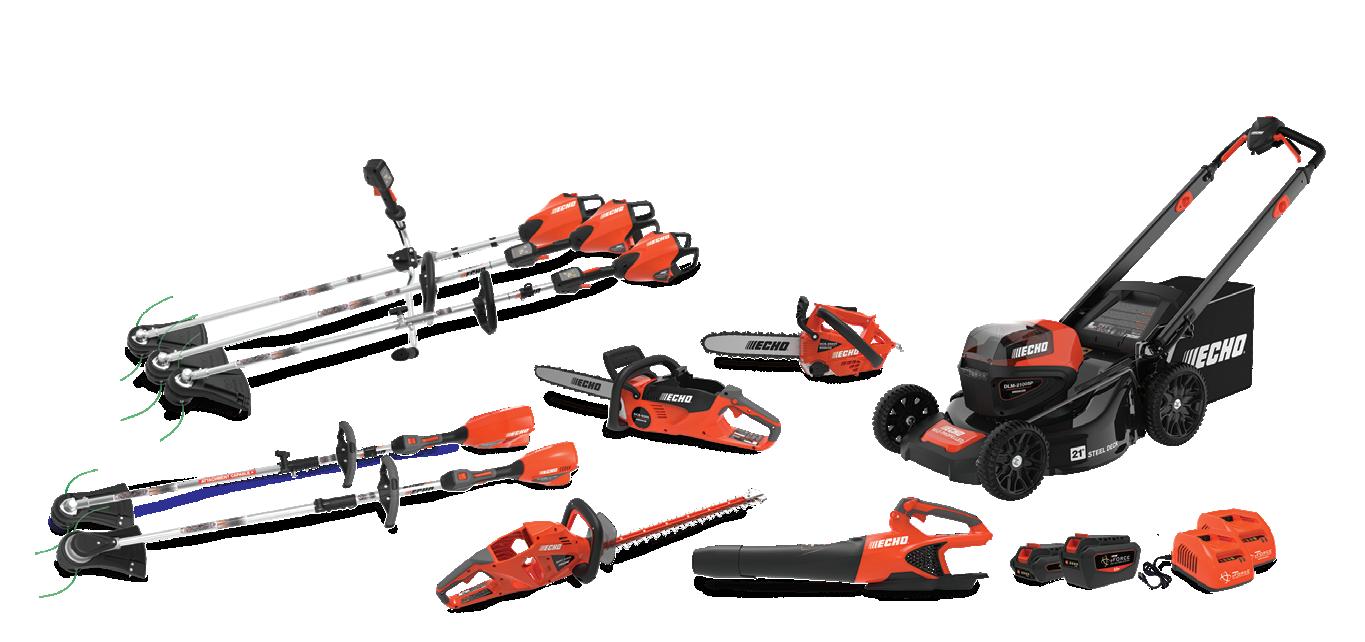

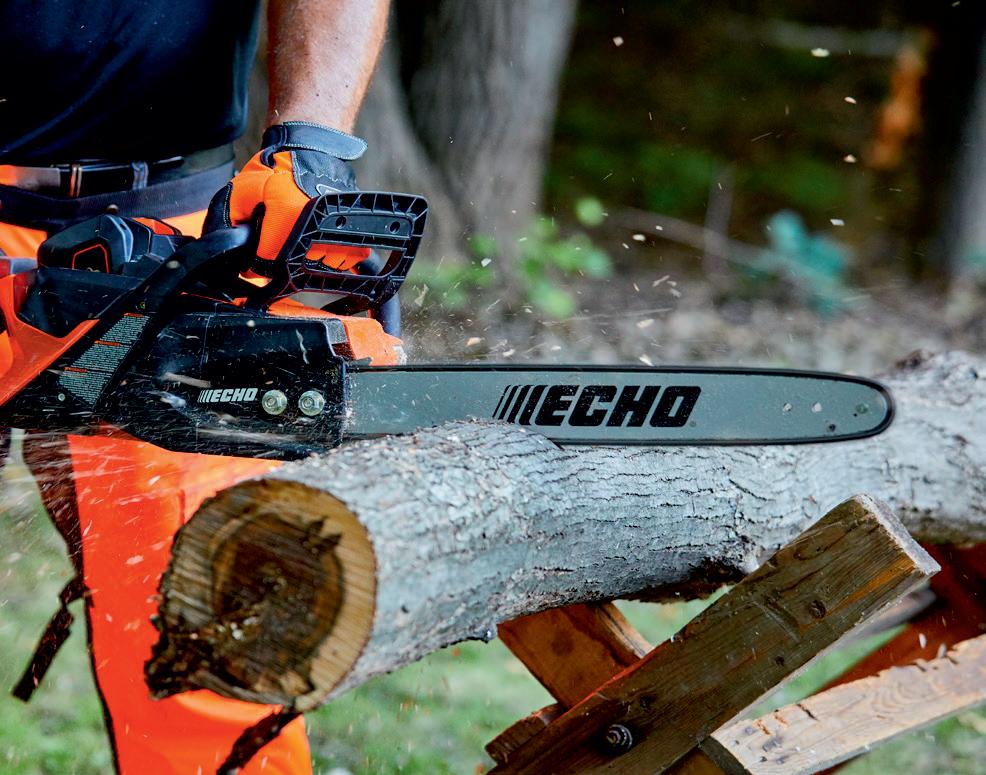
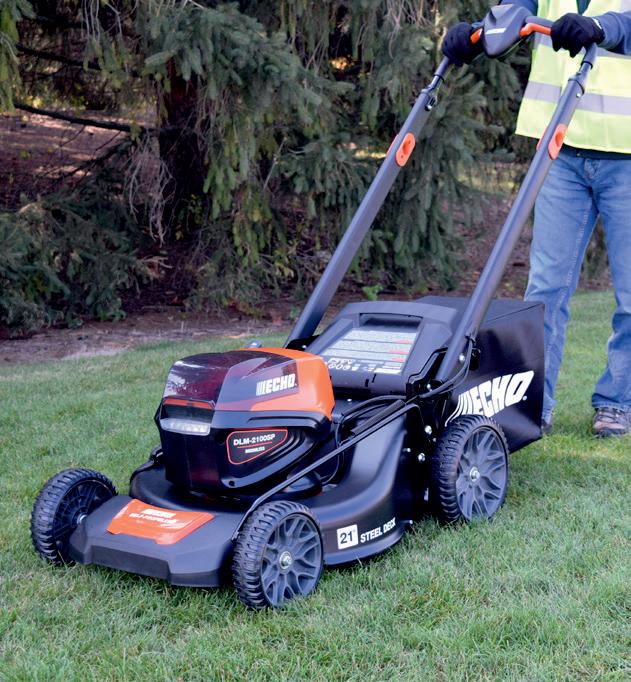
The 36,300-square-foot building is located on a 7-acre site adjacent to the current RC Mower’s location. It features 9,300 square feet for office operations and another 27,000 square feet of production space. This new facility provides the growing robotic mower manufacturer with three times the space it had at its previous location.
https://gpros.co/0dveka

Scan Here
To continue reading the rest of this story
OPEI Opens Registration for Annual Meeting

The Outdoor Power Equipment Institute (OPEI) opened registration and room blocks for its annual meeting, to be held June 20-22 at the Omni Grove Park Inn, Asheville, N.C.
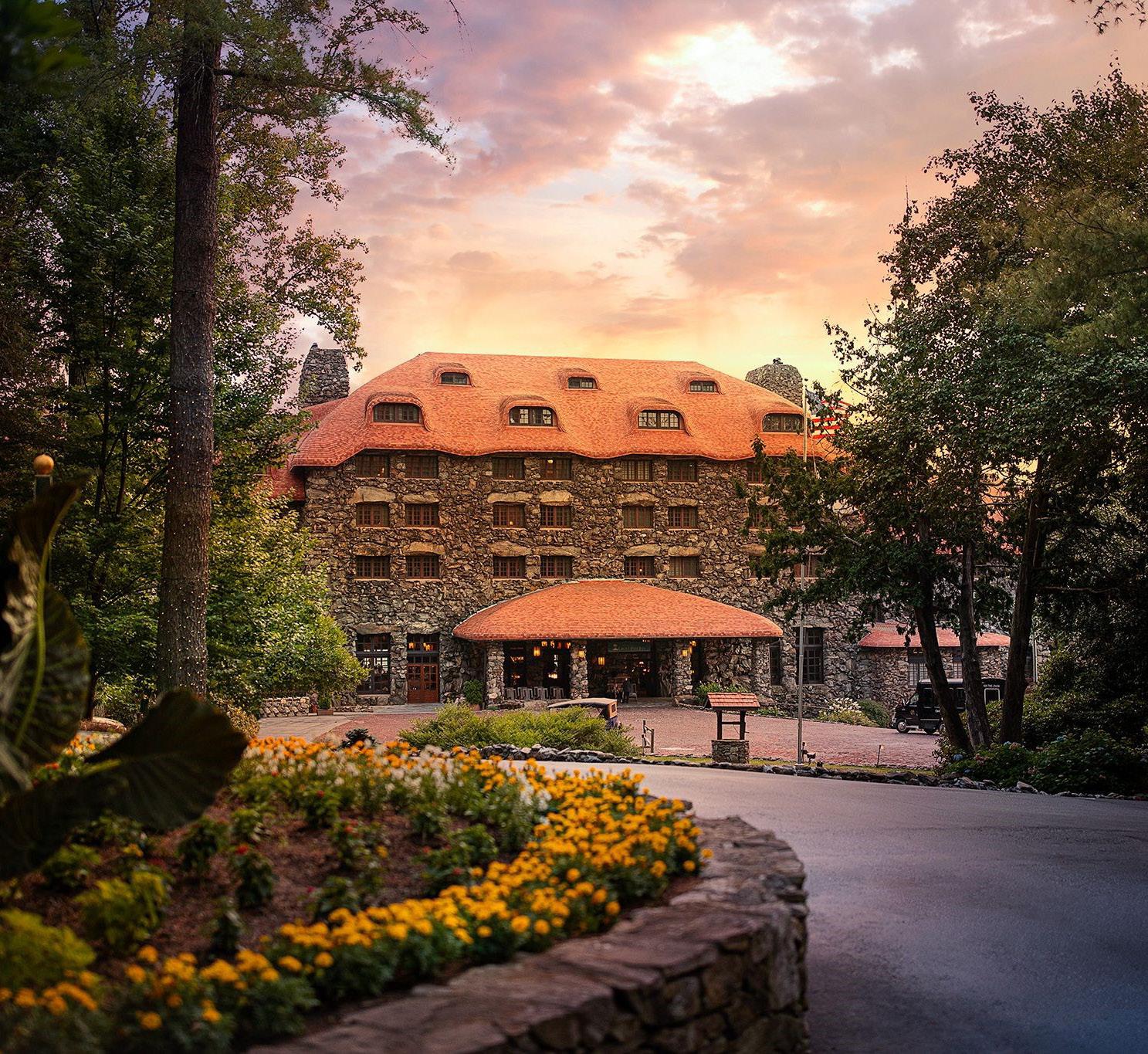





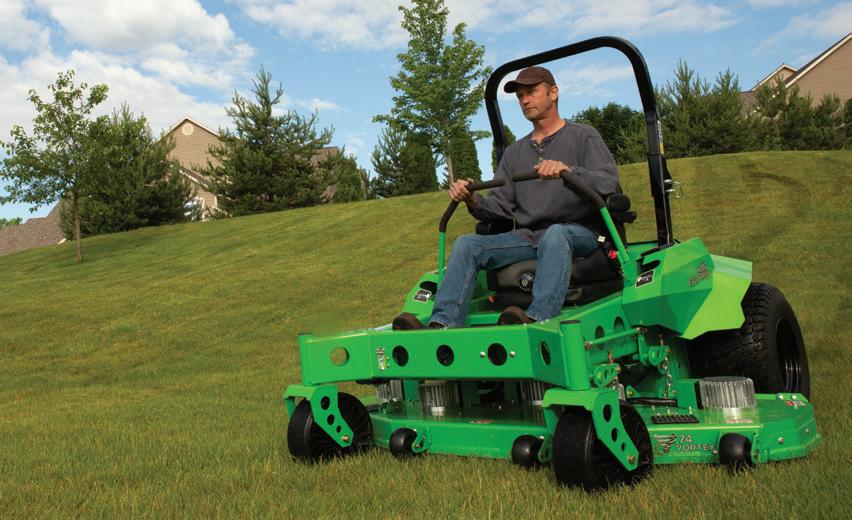

In addition to industry updates from association staff and tours of Asheville breweries and the Biltmore Estate, the program includes a slate of engaging keynote speakers to address practical topics of leadership, the economy and business trends, including:
• Economist Alan Beaulieu: “Gauging the Risks Going Forward 2023 to 2024”

• Ford Motor Co. Chief Futurist Sheryl Connelly: “Confessions of a Corporate Futurist: Coming Trends That Will Revolutionize Your Business”
• Pulitzer Prize-winning Presidential historian and author Jon Meacham: “The Art of Leadership: Lessons From the American Presidency”
Scan Here
To continue reading the rest of this story
https://gpros. co/uo7bti
POWERED UP
Landscape contractors relay their experiences using battery-powered equipment and provide advice for others looking to do the same.
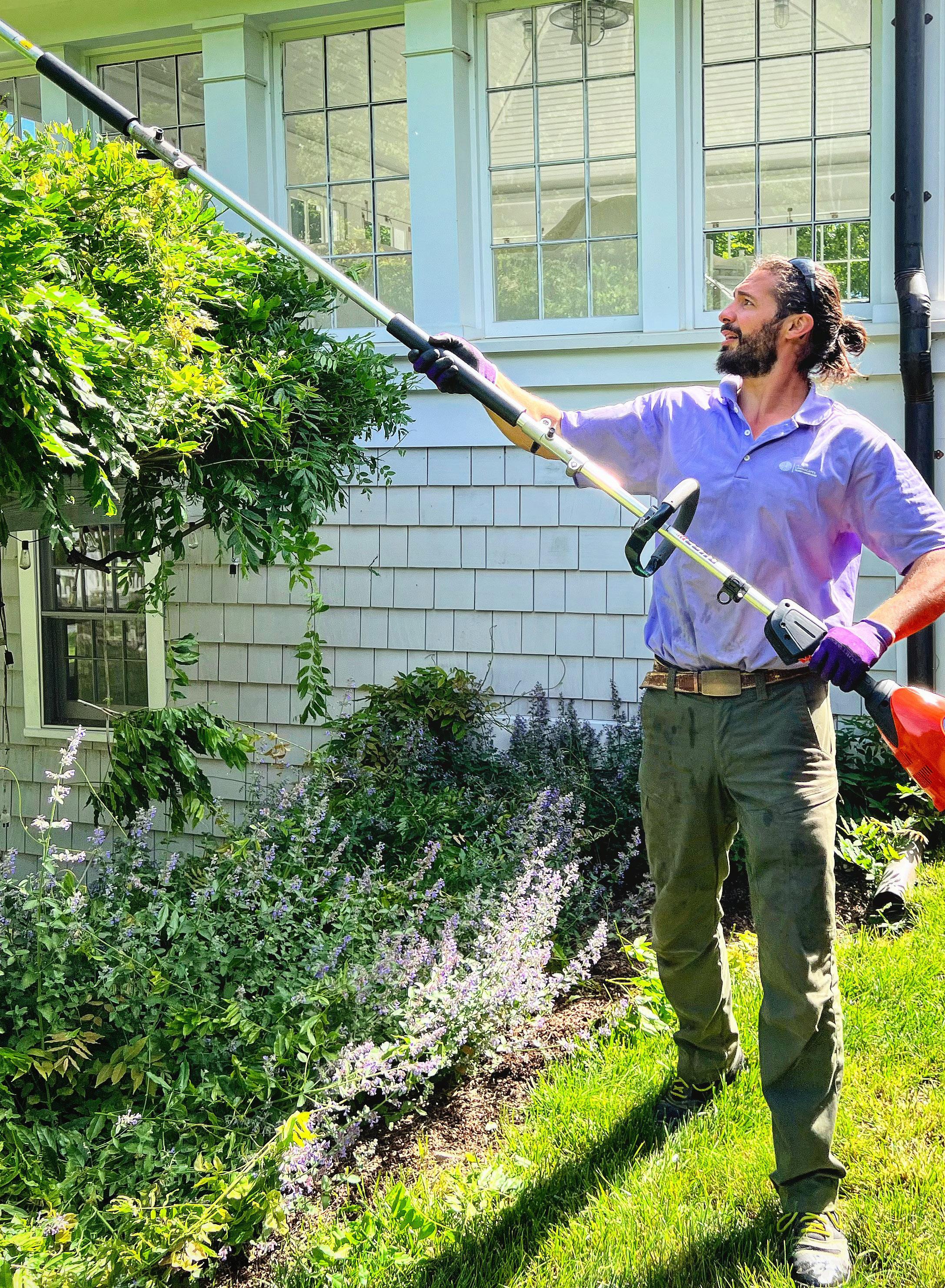
The buzz around electrification and battery-powered equipment has become louder and louder the past several years. With increasing regulations in some regions and demands from customers for quieter equipment, some landscape companies have decided to seize the opportunity.
“It may appear that our job is just to make tall grass shorter, but our real goal is to create meaningful environments for our customers,” says Tom Smith, division fleet manager for the West Division of LandCare, which has implemented 100 small pieces of Husqvarna equipment, such as string trimmers heads, chainsaws and backpack blowers, and is in the process of piloting battery-powered mowers and electric vehicles. “We realized the benefit of battery power to future generations and strongly believe that it’s the right thing to do. It was also a business decision because we could see upcoming regulations and discussions happening in local governments and wanted to be ahead of the curve.”
Landscape contractors using battery-powered equipment in their day-to-day operations shed light on how they’re using the equipment and offer up advice for other landscape pros who have not yet powered down their gas-fueled equipment.

Why switch?
While some landscape companies soon may use batterypowered equipment due to regulations, others first started using it out of curiosity for the new technology.
“I wanted to see how long it would last and if it would work for a company like mine rather than just a homeowner using it on their own yard,” says Justin Burns, owner of Dependable Lawn and Garden Services in Livermore, Calif. “I wasn’t sure what to expect. I know a lot of people expect the battery life to not last very long, but I was surprised by how well it worked, and I started liking it more than my other equipment. Before I knew it, I was hanging up some of my original gear and heading out with the battery equipment.”
Burns, who uses Milwaukee Tool battery-powered equipment, started out using the string trimmer and hedge trimmer and now has a fully electric setup. The only item he sometimes supplements with gas power are backpack blowers in the fall when he’s cleaning up heavy wet debris. Burns added that once he did the calculations of what he spent per year on oil and gas, the upfront cost of the battery and ultimate savings just made sense.
“Buying all the batteries was basically like investing in all the gas upfront for the year, but then, in the years after that, they basically already paid themselves off,” Burns says. “So say I spent $2,000 on batteries, and I spent $1,200 on gas for the year, it all equals out within the year, especially when you’re talking about the cost of air filters, fuel filters, spark plugs and all that type of stuff.”
Other companies, like J&J Property Pros in Dutchess County, N.Y., took the leap toward battery solutions due to customer requests.
“We had a customer who said, ‘Hey, we want you to just use battery-powered equipment on our property,’” says Jenneka Temkin, co-owner of J&J Property Pros. “So, we had certain projects where we used battery equipment, and from there, the rest is history.”
Being the first landscape company in the area to adopt the new technology proved to be another incentive, Temkin says.
“There are many skeptics, and we were at first as well, but we’re finding
that it’s more efficient for our environment, and customers like it,” Temkin says. “It’s amazing how far battery products have come because if this was four years ago, I don’t think we would have been able to launch and go full into battery power.”
LandCare has also experienced more loyalty from its clients due to its use of battery power.
“We learned we had more customers than we realized who wanted to be part of leading the charge to make a better environment,” Smith says. “Our employees have embraced it more than we thought they would, too. They’ve told us they feel good about doing what’s good for the environment, but they also like the benefits that come with battery products like not having to pull start a gas machine on a cold morning or listen to the loud noise of a gas engine for hours and hours. We’ve heard from employees that they've found battery tools to be ergonomically beneficial, too. They enjoy working with the batteries on their backs and a lighter tool in their hands.”
Burns agrees.
“The gas equipment is very loud, there’s a lot of vibration and the exhaust spits out right in your face,” Burns says. “I’ve used a gaspowered hedge trimmer on jobs for three hours, and my arms feel like they’re vibrating for hours after.”

Burns adds battery equipment nearly eliminates maintenance costs.
“I would always do maintenance on my own stuff, where I’d have to go down to my local shop, get spark plugs and fuel filters,” Burns says. “With the battery equipment, the only maintenance I do is put a little grease on the trimmer head and make sure the batteries are charged.”
Johny Crooks, owners of Blades of Grass Lawn Care in Savannah, Ga., adds that using battery-powered tools helps him get to customers’ properties sooner. He uses handheld batterypowered tools that use Toro batteries and the Revolution Mower, which allows him to mow 65 properties on one charge.
“We can start mowing with our push mowers earlier than before, and we have no issues with people complaining,” Crooks says. “I’ve had customers come out and say, ‘Whoa,
I didn’t even know that you guys were out here. It’s so quiet.’ And then they’re inquisitive about how it works.”
What to keep in mind
One potential obstacle to onboarding battery-powered equipment revolves around the infrastructure to support it.
To get around this, landscape companies have come up with various solutions.
“We’re testing out power distribution boxes and other solutions as they become available, and we’re learning that our facilities sometimes don’t have the power they need, so we have to get the best usage out of what we do have,” Smith says.
Other landscape firms such as J&J Property Pros have employed trucks with electrical outlets and solar panels.
“We typically try to have all the batteries charged the night before, but all of trucks come with electrical outlets in the back or inside the vehicle just in case, and we have battery packs that we can just plug the batteries in to recharge them,” Temkin says. “We bring extra batteries just have on hand.”
She adds that the company has gas-powered equipment on hand as backup, but it mostly comes down to planning ahead.
“We typically plan a day in advance, so we know what we’re doing that week. We just try to be proactive about charging the night before, and then you don’t really have to worry about too much charging on the go,” Temkin says. “It also depends on what works best for your team and your workflow.”
Blades of Grass Lawn Care, being located in sunny Savannah, also makes use of solar panels on its trucks.
“We bought a solar panel inverter to put into the trucks, and it was really good to keep ups charged up,” Crooks says.
Crooks adds that crews may need additional training to use the battery equipment to get over the learning curve.
“It’s learning how to feather the trigger, for example, with battery equipment because with gas, you just squeeze the trigger and go full bore,” Crooks says. “It’s also remembering that we’re so accustomed to hearing that loud noise with equipment
Explore the all-electric lineup from Toro. The Revolution ™️ series features bigtime power, reliability, innovation and impressive battery life to ensure you and your crew are good to the last cut. You can expect to power through your day, every day. Experience a revolution in the way professionals care for lawns. FROM START TO FINISH.™
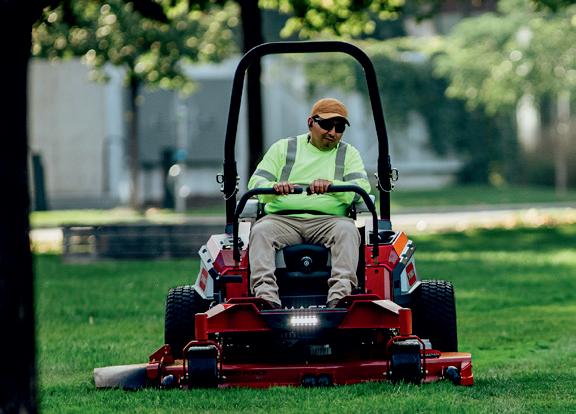

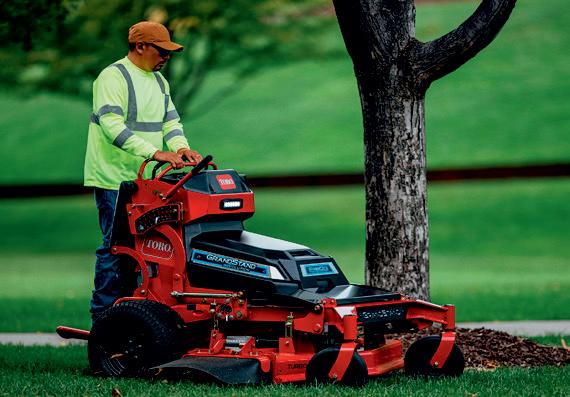

learn more at toro.com/revolution

that you’re under the impression that batterypowered equipment is not working the way it’s supposed to.”
When it comes to recycling the batteries at the end of their lifespan, Crooks recommends checking with municipal recycling centers in the area.
Advice from the pros
Landscape pros recommend doing due diligence in exploring the products versus jumping in blindly.
“It’s doing the research and not making any decisions in haste,” Temkin says. “It was a process to sit down and think about whether this was the right decision. Don’t rush into it. Think about your business as a whole and make strategic decisions from there.”
LandCare also did just that.
“Before we converted to electric with our crews, we measured what they were doing with gas. We deployed hour meters on the equipment, and we tracked usage on a daily basis for several months,” Smith says. “This helped us understand what the real-life usage was for our gas equipment. We wanted to know things like how many hours a day the equipment was running and the peak day for usage. We wanted to make sure that when we converted to electric, we could have full buy-in from the employees. We knew if we sent them out
there without enough battery power, it wouldn’t be a good experience. We made sure we had enough batteries because it’s not as easy as carrying around a gas can and filling up during the day.”
Burns suggests that once landscapers pick a platform and brand, they stick with it.
“You don’t want to have to invest a lot of money into different companies’ batteries and tools and mix and match stuff,” Burns says.
For landscapers still hesitant, Burns encourages them to just try it.

“There are a lot of people that are just gung-ho on gas, but a lot of these guys try it and come to say ‘Wow, this thing actually works,’ and then they put it on their trailer and use it every day,” Burns says. “I see a lot of people moving toward battery equipment, even if they are on bigger equipment like ride-on mowers.”
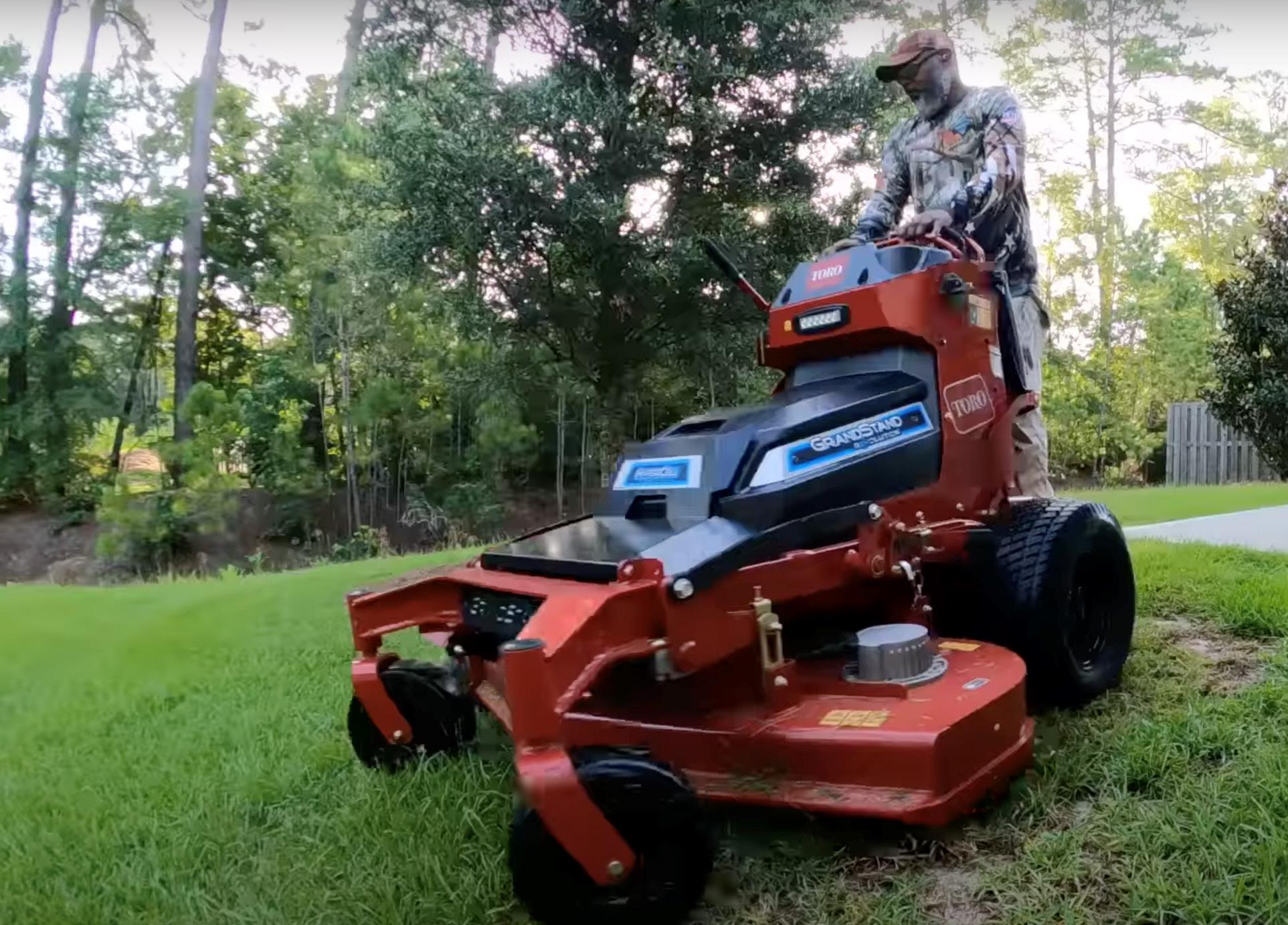
SAY HELLO TO MY LITTLE FRIEND.
THE NEW CASE MINI EXCAVATORS
We’re so all in on helping you make more money with mini excavators; we’re going big on expanding our line. We’re rolling out new diesel models and new electric models, starting at CONEXPO. Like our big machines, our mini excavators are well-appointed and operator friendly. Get big things done in tight spaces with CASE. Learn more at CaseCE.com or talk to your dealer.

Business MANAGED
Green industry companies should consider only software systems designed specifically for the green industry as generic software requires workarounds to fill gaps in service, adding unnecessary costs and time.
“We know what green industry firms are dealing with on a day-to-day basis,” says Gage Roberts, director of sales for the eastern division of Aspire, a software manufacturer in Chesterfield, Mo. “We know what their struggles are. Our solutions were developed around their specific needs. Also, as these companies grow, and as they need new and emerging ideas and features, if they partner with us, we are familiar with changes in the industry.”
Today’s business management software can handle just about every aspect of business, including estimating costs, measuring jobsites, invoicing, purchase order and inventory tracking, payroll reporting and even marketing.
The software is continually updated with new features. For example, Indiana-based Tree Management Systems recently upgraded its Arborgold software so that clients can operate the system in Spanish, done through the Crew app.
“We’ve had so many people needing to access the software in Spanish for their crews so we added that feature,” says Donna Garner, co-founder and chief marketing
officer at Tree Management Systems/Arborgold.
Business management software, which is cloudbased and usable from laptops, tablets and smartphones, can also instantly analyze long-term sales trends and profitability and catch problems early.

“If you are going over on work hours, it can let you know quickly, and you can respond right away, instead of waiting until the end of the year to find out,” says Chris Darnell, marketing coordinator at The Integra Group, another Chesterfield, Mo.-based company that makes the Boss business management software.
Taylor Gould, chief revenue officer of SingleOps, an Atlanta business management software provider, says software can also help a green industry company grow without increasing overhead.
“The right software will allow one or two people to do the work of several people,” Gould says. “We also see the right software increase productivity of field crews through more efficient routing, digital work orders and live vehicle tracking that can hold crews accountable to their schedule.”
Doing the math
Mike Carden, senior product manager at New Jersey-based
Software experts provide information on what landscape companies should look for when choosing a business management software.
WorkWave, which makes the RealGreen business management software, says green industry professionals need to ask themselves what they need before investing in a system.
“Does it work on the systems you need it to?” Carden says. “Are there automations to help expedite routine functions like routing and scheduling, billing and communications? It’s also important to consider security. Will the system keep your data and your customers’ data safe and secure?”

Arborgold software manages job scheduling and routing by finding the most efficient way to send crews out for the day. Companies only have to plot the jobsites on a map and click a button. Also, the software calculates pricing of chemicals, mulch or other materials needed for a job based on square footage of the site or tree diameter.
“We have a built-in drawing tool to
draw the site, which you won’t find in software outside the industry,” Garner says. “You can make a twodimensional drawing of the jobsite and include the drawing in your proposal to the customer.”
Gould says SingleOps software uses satellite photos to show work crews which parts of a lawn need fertilized or mowed and where trees need to come down.
“We have a lot of companies that will also use this to show crews where hightraffic areas are on corner properties and the best place to safely park vehicles on a jobsite,” Gould says.
Carden says RealGreen software gives green industry companies “complete visibility” into a property, showing details like locations of fences and gates and the type of turf in a yard.
@JD8.stock.adobe.com
“Our flagship software allows for a robust property inventory on each property record, helping users avoid potentially costly mistakes like sending a technician to the wrong appointment with the wrong equipment or products,” Carden says.
When it comes to payroll, Arborgold tracks both pay rates and work hours, which allows a company to weigh costs against revenue on each job.
“That’s something the people in the industry often overlook,” Garner says. “They work so hard, but are they making money? That’s hard to find out if you’re just using an accounting program. It doesn’t give you the full picture per job.”
Darnell says Boss software can take on all aspects of a green industry operation except accounting. However, Boss software can integrate with a company’s accounting software. Boss records the work hours and shares that information with the accounting system.
Integration with other software programs doesn’t end with accounting. Arborgold integrates with SiteOne Landscape Supply so companies can not only price projects but also order products from SiteOne through Arborgold.
Arborgold also integrates with LandscapeHub, which assists
companies shopping for plant material, and Takeoff Monkey, which helps with the project bidding process.
Information control
Companies like Aspire and SingleOps provide end-to-end software, meaning green industry clients must buy their comprehensive package, which includes offering financing to customers, managing customer relations, tracking trucks and equipment and marketing.
Roberts says Aspire’s end-toend software is only for companies doing more than $1 million in business annually, where “point solutions” (individual software features that address one or two needs) aren’t adequate.
“Once a company reaches a certain level, there’s a lot of data flying around between what’s happening in the field and what’s happening in the office,” Roberts says. “The information will ultimately leak without a system in place to stop it, which is what our system does. It’s like playing a game of telephone. You may get some of the information at the end of the line, but you can lose important information along the way.”
Arborgold offers four tiers of software, each with various features, which can be further customized. The Integra Group/Boss conducts a “discovery process” or “fit gap analysis” with prospective clients.
Of course, business software providers train clients in the use of their systems. Carden says onboarding for RealGreen, for example, takes about 60 days. Client feedback, sometimes received during training, also drives change and innovation.
“Customer feedback is the biggest consideration for us when implementing new features in our platforms,” Carden says. “Specifically, how can we better equip our customers to provide services more efficiently and effectively?”
Bob Sandrick Freelance Columnist
LAWN CARE
Once the winter season ends and temperatures begin to warm up again, warm-season grasses including zoysiagass, St. Augustinegrass, bermudagrass, centipedegrass and others start to come out of winter dormancy. While these grasses green up, it’s not uncommon to notice patches of brown spots or damage that wasn’t visible when the turfgrass was uniformly dormant and off-color. This can sometimes be an indication of turfgrass disease.
First, it’s important to note that although disease outbreaks can technically happen at any time of the year, warm-season turfgrass diseases typically become active during the spring and fall months while most cool-season grasses like fescue, ryegrass, bentgrass and bluegrass are impacted by diseases in the summer.

Having the basic knowledge about turfgrass diseases can be helpful in preventing and treating them appropriately.
About turfgrass disease
Any type of disease needs three things to spread and be present, also known as the disease triangle: a host, a pathogen and the ideal environmental conditions. The turfgrass is already a potential host. Pathogens that cause disease outbreaks are always in the grass, thatch layer, soil, etc., but these pathogens will often lie dormant until suitable weather conditions trigger them to spread. Therefore, weather plays a major role in disease outbreaks.
Although turfgrass diseases can take over lawns at any time of the year, the spring and fall seasons are two transitional periods between the hottest and coldest times of the year. When these transitional periods happen, temperatures are either rising or falling. The change in weather conditions that aren’t overly hot or cold combined with humidity, excessive irrigation and nitrogen inputs create opportune environments for disease outbreaks.
This is especially pertinent for warm-
Five Turfgrass DISEASES and How to PREVENT Them
Lawn care operators should be aware what to watch out for and learn how to keep turfgrass diseases from developing into a big problem.
season grasses. Turfgrasses are more vulnerable to disease outbreaks if the grass is growing slowly, damaged or stressed. Cool-season grasses grow the slowest during the summer, while warmseason grasses grow the slowest as they go into dormancy during the fall or come out of dormancy in the spring.
Common spring turfgrass diseases
Diagnosing a specific turfgrass disease that’s present is important— but also difficult. Identifying a turfgrass disease will help the overall strategy for prevention and treatment. Although some professionals can look at a turfgrass disease and have a ballpark idea of which disease he or she may be dealing with, the best way to get a professional diagnosis is to send a sample off to a local landgrant university or extension office.
1. ANTHRACNOSE
When temperatures are warm and
moist during the spring season, reddish-brown or brown spots may begin to appear. This may be a sign of a disease called anthracnose. These spots can sometimes be surrounded by a yellow halo, and over time, they’ll cause yellowing and death of the grass blade. Anthracnose mostly affects centipedegrass, but it has the potential to take over any warm-season grass.
Preventive and curative fungicides should contain one or more of the following active ingredients: azoxystrobin, chlorothalonil, fenarimol, fludioxonil, metconazole, myclobutanil, propiconazole, thiophanate methyl, triadimefon, trifloxystrobin or triticonazole.
2. LARGE PATCH
Large patch is a more common turfgrass disease that can affect all warm-season grasses. Although it’s often spotted in the spring as turfgrass comes out of winter dormancy, it takes over the grass during the fall—it’s just difficult
to spot because most of the grass is uniformly dormant and off-color. Large patch can range from a few inches to several yards in size and takes the form of large circles of thin, damaged grass. However, large patch isn’t circular in all cases. It can also look like irregularly shaped patches of damaged spots. In either scenario, it usually produces a bronzecolored border where the healthy grass and affected grass connect. Fungicides should contain one or more of the following active ingredients: azoxystrobin, chlorothalonil, fludioxonil, flutolanil, iprodione, mancozeb, metconazole, myclobutanil, polyoxin D, propiconazole, pyraclostrobin, thiophanate-methyl, thiram, triadimefon, trifloxystrobin, triticonazole or vinclozolin.
Spring dead spot is another common warm-season turfgrass disease that demonstrates symptoms in the spring—

its name, “spring dead spot”—but takes hold of the grass during the fall. It can affect a number of turfgrasses, but it’s most commonly diagnosed in bermudagrass. Signs of spring dead spot are bleached, sunken, circular patches that range between a few centimeters wide to larger patches on a lawn.
When searching for the best disease control for spring dead spot, there are many options to consider. For best results, consider using one or more of the following active ingredients: azoxystrobin, propiconazole, chlorothalonil, iprodione, thiophanate methyl, tebuconazole, fluoxastrobin, isofetamid, mefentrifluconazole, penthiopyrad, prothioconazole and pydiflumetofen.
Sod Solutions
from some of the other turfgrass diseases as it creates oblong spots on the leaf blades. These spots typically have a tan color with a darker ring around the border of it. Gray leaf spot is found when temperatures range between 77 to 86 degrees Fahrenheit and during rainy, humid periods.
The most affected turfgrass with gray leaf spot is St. Augustinegrass, but it can also infect fescue, bermudagrass, centipedegrass and ryegrass.
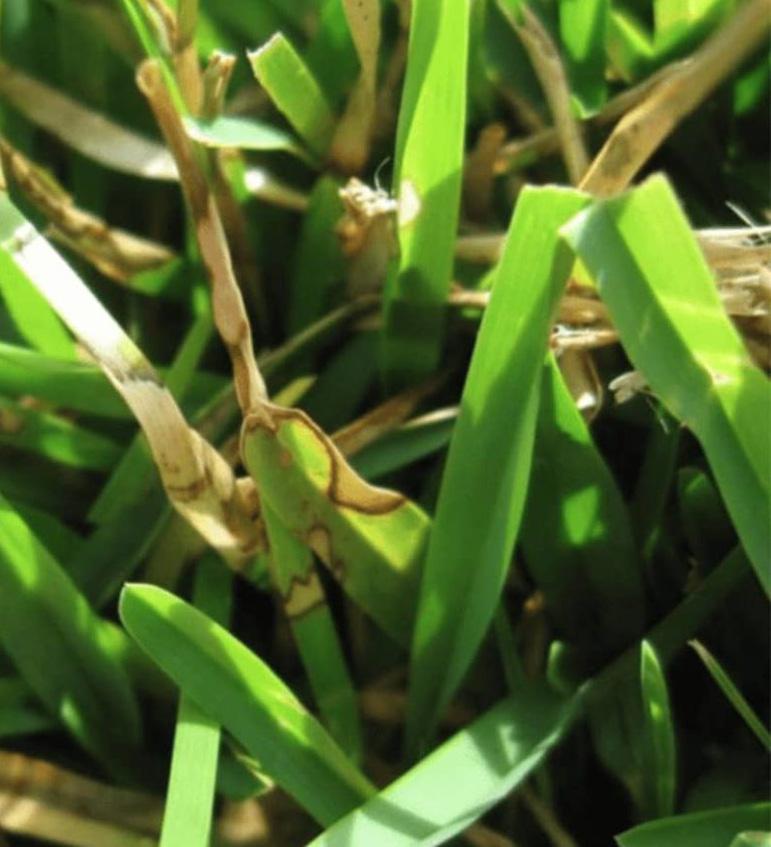
Fungicides with azoxystrobin, pyraclostrobin, fluoxastrobin, thiophanate methyl, propiconazole or myclobutanil are effective for prevention and treatment.
Rust has light yellow to orange spots on individual grass blades. The light yellow spots appear during the early phases of the infection. These spots later turn into an orange color that runs alongside grass blade veins in the later stages. The orange spots should rub off when touched.
The most affected grasses for this disease are zoysiagrass and St. Augustinegrass. The disease takes hold of the turfgrass from late fall to early spring and usually shows up when temperatures begin to warm up again.
Fungicides with the active ingredient azoxystrobin, mancozeb, mancozeb plus copper hydroxide, metconazole, myclobutanil, propiconazole, pyraclostrobin, triadimefon, trifloxystrobin and triticonazole are effective for prevention and treatment.
As with any fungicide, lawn care operators should be sure to read and follow product labels thoroughly.
Gray leaf spot can look different
Valerie Smith Content Strategist Sod Solutions
The Scoop On STAND-ONS
What landscape contractors should know when it comes to stand-on
Versatility, efficiency, productivity—what’s not to love about these benefits of stand-on mowers?
“We are seeing a trend of professional landscapers purchasing and using more stand-on mowers,” says Chad Carney, go-to-market manager for commercial mowing and equipment with John Deere. “For example, if a professional landscaper has historically had 100 zero-turn mowers in their fleet and only two to three stand-on mowers, they now have 15 to 20 stand-on mowers with 80 to 85 zeroturn mowers. Stand-on mowers are a great complementary piece of equipment to zero-turn mowers, and in several applications and situations, they are the best solution.”

Mower manufacturers dive into how the machines can stand up to the challenges of landscapers’ day-to-day operations.
The benefits
Versatility and productivity are among two of the biggest benefits to stand-on mowers, according to Jonathan Guarneri, product manager at Exmark, as landscape companies can get more done in a wider variety of areas.
“The combination of those two things is a really powerful aid because time is money,” Guarneri says.
Brian Schoenthaler, marketing coordinator at The Grasshopper Co., adds that other benefits come in the mowers’ compact footprint and easy on/off capabilities.
“The compact design allows more units to be loaded onto a trailer,” Schoenthaler says. “The easy on/off capability allows the operator to quickly step off to pick up debris. Also, standing makes it easy to shift your weight
on uneven terrain quickly, easily and efficiently.”
All of these reasons add up to healthier and happier employees, Carney notes.
“Sitting down on a zero-turn mower for eight-plus hours in a day can be tough on the back and midsection and create stiffness in the legs and hips, whereas on a stand-on mower, an operator can use their legs to pivot and shift weight and positions,” Carney says.
Applications
With space and trailers at a premium, stand-ons have gained popularity in big cities to cut in medians and tighter areas, according to Schoenthaler and Carney.
“Stand-on mowers can go up and down curbs that are near roads and parking lots,” Carney says. “You can generally go more places to mow, such as medians, slopes and tight spaces between buildings/fences, and you can maneuver easier around low-hanging items such as tree branches.”
What to know
Landscape pros should take the time to educate their employees on how to use stand-on mowers properly.
“The biggest challenge is simply getting comfortable driving it,” Carney says.
Guarneri notes that the fundamentals are virtually the same as other mowers and suggests operators start slow speed wise.
“As operators become comfortable, then they can increase their speed,” Guarneri says.
Protect Your Assets with GPS and Fleet Tracking
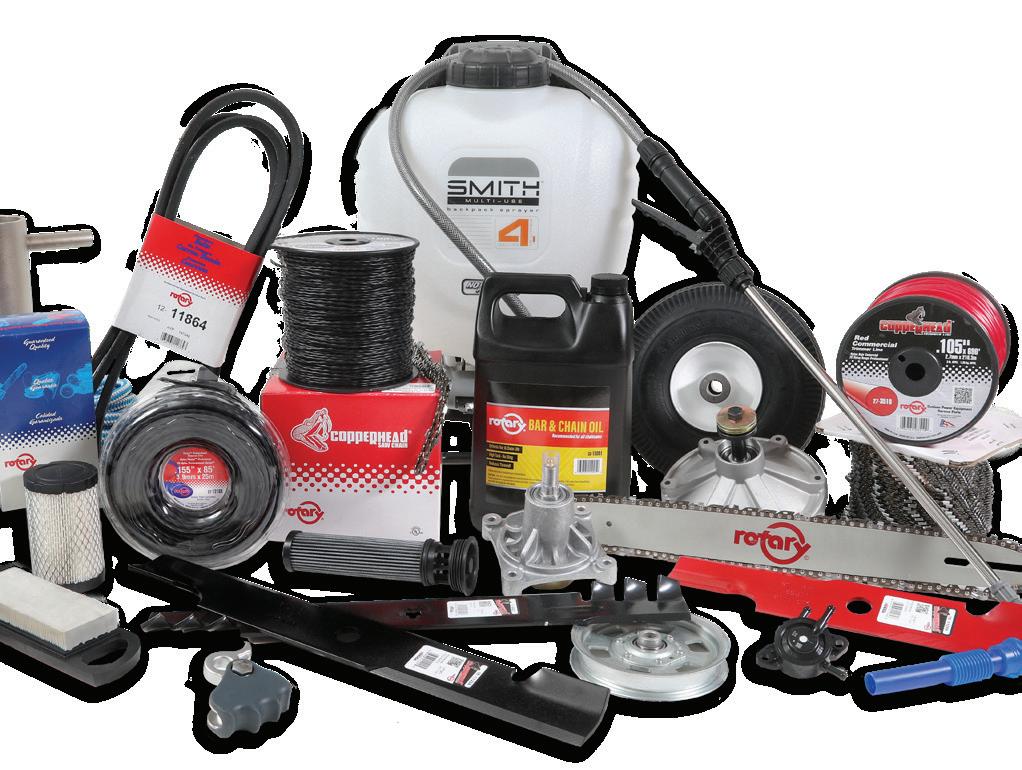
In today’s rapidly growing and evolving landscaping industry, businesses are continually looking for new ways to stay ahead of the competition. Embraced by many companies already, GPS fleet tracking and management is an invaluable technology that provides landscaping companies with many benefits, including improved efficiency, cost savings and enhanced customer satisfaction.
As a landscape business owner, acquiring and retaining skilled workers and securing your fleet vehicles are two of your biggest challenges. Unfortunately, labor market woes and rising costs of wages, vehicle maintenance, fuel, raw materials and auto insurance have made these challenges even more difficult to overcome. In addition to lowering the cost of doing business, innovative fleet management tech can help keep landscape companies’ valuable workers loyal and on the job.
Let’s delve deeper into how GPS fleet tracking and fleet management can address these problems and help your business grow.
Protect your investments by creating a safety culture

If one of your workers is in an accident, you’re out of a truck that day, perhaps for several days or weeks while it’s getting repaired or replaced. At best, your tech is sitting on the side of the road waiting for a tow truck if not injured. Regardless of the accident’s severity, their day will be very unproductive. Depending on the time of day, several appointments may still need to be completed, forcing your office staff to shift other workers’ schedules around.
According to Work Truck Online, vehicle downtime costs an average of $624 per vehicle per day. This takes into account jobs not completed and high emergency repair costs.
In a recent study, the Federal Motor Carrier Safety Administration found that with injuries, a vehicle accident can cost as much as $331,000. In the event of a fatality, it can cost $7.2 million.
At scale, these events can lead to you losing your business. These losses are preventable, and it starts with identifying risky driving behavior, changing that behavior and empowering your workforce with positive reinforcement for good
behavior. If your workforce drives aggressively, they are 66 percent more likely to crash. You can’t change what you can’t measure, which makes monitoring driving behavior crucial.
Core vehicle and driver factors to measure include:
• Detection of driving safety events, including speeding, sudden acceleration, hard and harsh braking and cornering
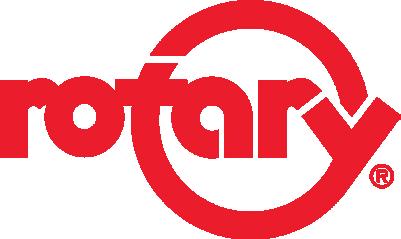
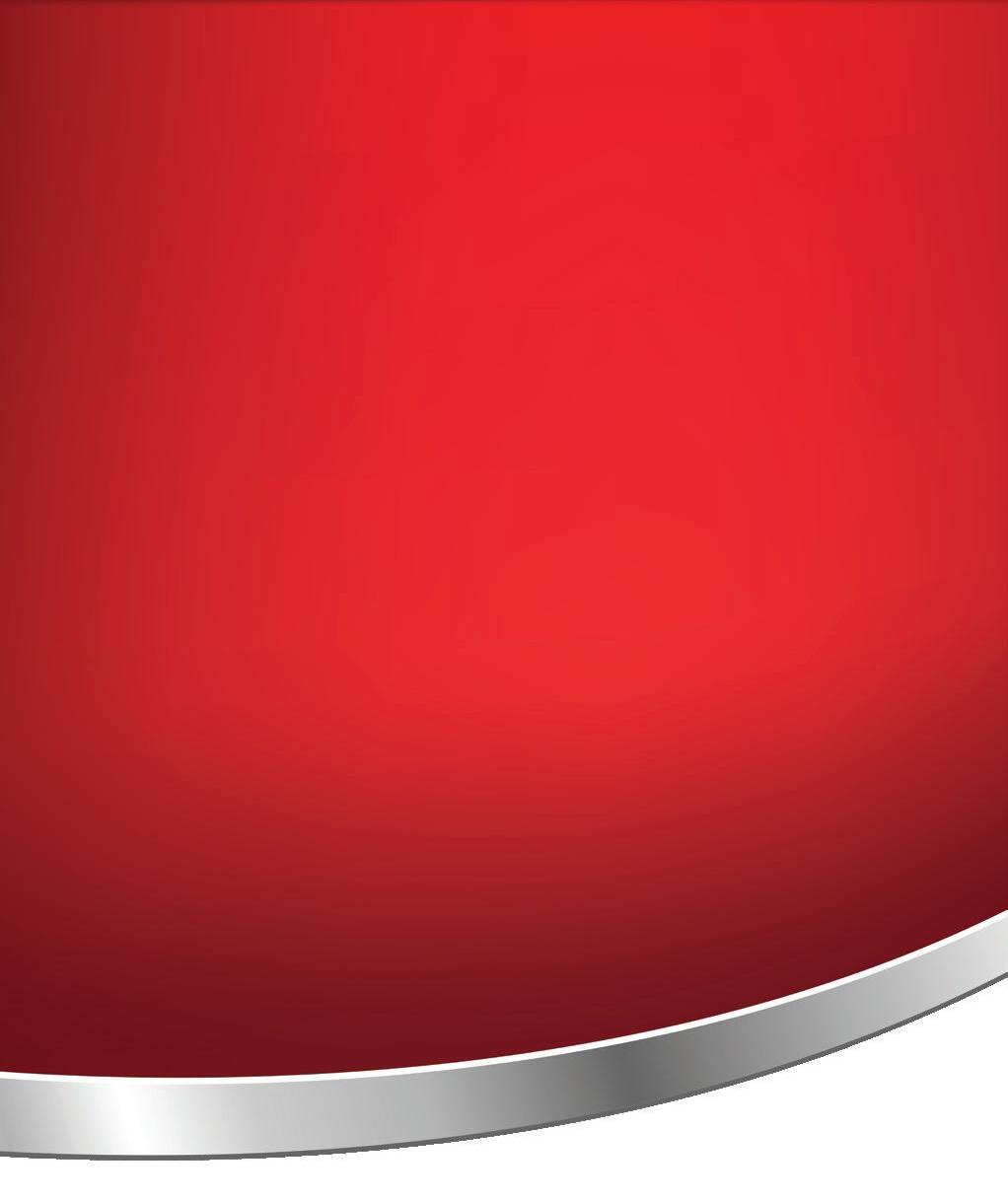
• Time of day and weather conditions at each safety event
• The severity and duration of driving safety events
• Crash impact detection
EQUIPMENT & TECHNOLOGY

Fleet management tech for driver retention
It is estimated that by 2023, the driver shortage is going to shoot to 100,000-plus from its current 60,000 shortage, according to the American Trucking Associations. Over the next decade, industries with vehicles will need to hire roughly 1.1 million new drivers, or an average of nearly 110,000 per year. The tactics below can help.
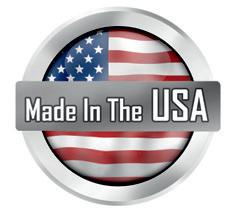
1. Create a safety culture. With the help of modern GPS tracking and a fleet management system, introduce score-based driver reward and gamification.

2. Make their jobs easier. GPS fleet tracking and fleet management can streamline your workers’ day to day, creating a happier workforce, increased customer satisfaction and efficient and cost-effective operations.
3. Improve communication. Allow your workforce to chat with you about matters of immediate concern quickly and easily.

Watching your back with smart safety cameras
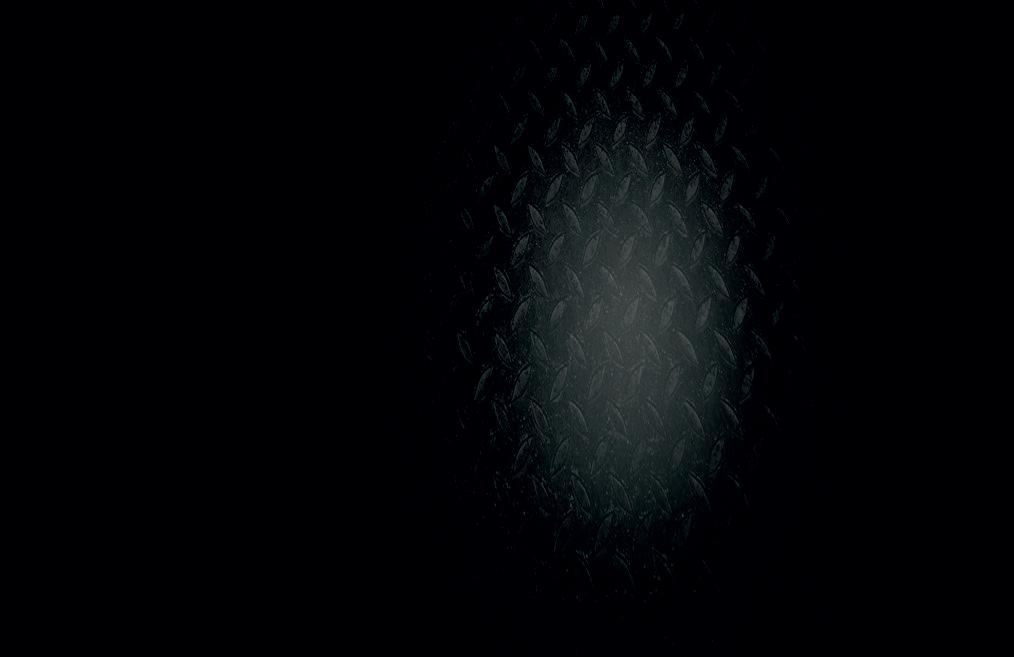
Even if your drivers are perfect, you are still vulnerable to losses that stem from accidents. Every day, service
vehicles are a target for frivolous lawsuits. This is a disturbing trend that can cripple your landscaping business. Did you know that 70 percent of accidents involving commercial fleets are not the fault of the worker?
A picture paints a thousand words, but a video tells the truth. Protect yourself from frivolous lawsuits and exonerate your drivers with the use of smart safety cams.
Minimizing unscheduled downtime with proactive maintenance
We’ve already discussed how much it can cost you if one of your vehicles breaks down unexpectedly. This makes regular preventive maintenance on your fleet a must.
Optimizing your approach to scheduled maintenance, especially with larger fleets, can be daunting. GPS fleet management can help by providing automated reports detailing maintenance tasks and tracking which vehicles require assistance soon. You can set up alerts and reminders based on the odometer and fault codes for services due, such as oil changes, brake jobs, tire rotations and vehicle inspections.
By shifting from reactive to proactive maintenance, you can reduce your operational costs and increase the overall efficiency of your landscaping business. Proper maintenance can improve fuel economy by up to 40 percent, and proper tire pressure can improve gas mileage by up to 3 percent in some cases. Additionally, by identifying and addressing potential issues before they become significant problems, you can minimize unscheduled downtime, keep your technicians working efficiently and ultimately, avoid ultracostly unscheduled repairs.
@alphaspirit.stock.adobe.com
Theft prevention
Vehicle theft is a growing concern for everyone who owns a vehicle. From your home to your business, vehicles are necessary and assets that are at risk of theft. More so, however, is the risk of theft to commercial fleets. Commercial fleet vehicles are hard to come by, especially since supply chain disruptions have worsened during the past few years. Vehicle theft totals more than $6 billion per year in losses, with the average cost per vehicle theft totaling over $8,800. This is clearly devastating to any landscaping business. While GPS tracking devices can’t prevent theft, they can certainly help you recover your vehicle quickly.
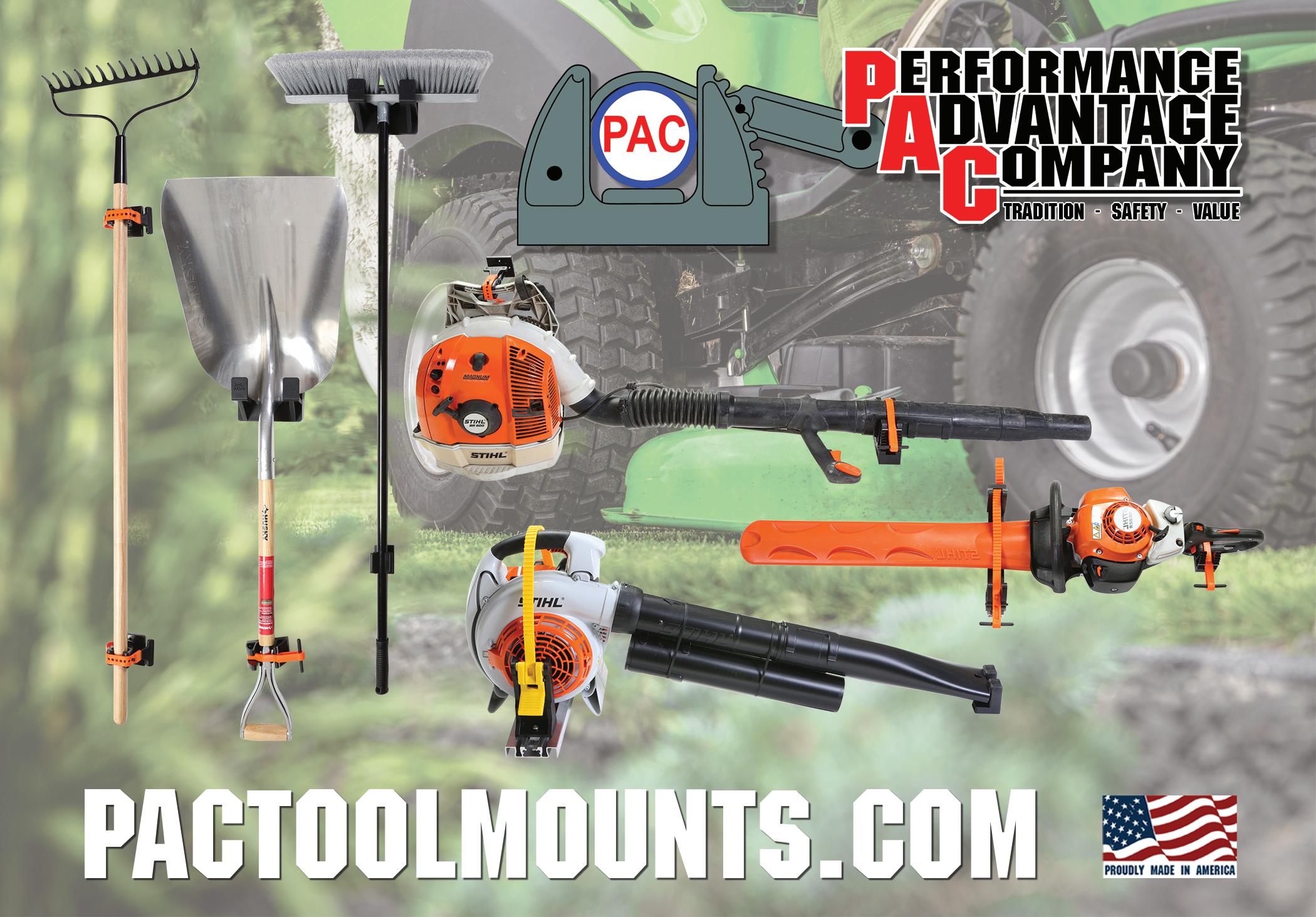

Why now? GPS fleet tracking is an invaluable tool for landscaping businesses who want to protect their valuable assets, minimize liability and reduce costs associated with their fleet. By incentivizing safe driving behaviors, installing smart safety cameras and implementing proactive maintenance strategies, you can improve the efficiency and profitability of your service business while keeping your technicians and trucks safe on the road.
Matt Curtis Director of Partnerships Azuga
What to Know About Implementing Design Software
Bringing clients’ visions to life before a single hardscape product is placed, design software can save designers time, streamline operation managers’ processes and even help sales reps upsell their clients.
“It’s exceptional being able to show the customer what their property is going to look like when we’re done with the project. In fact, we’ve had cases where sales have improved because being able to picture what a property could look like has a significant impact to the customer’s purchasing,” says Nicholas Branigin, landscape designer at Global Greenz in Melbourne, Fla. “It also allows for exact measurements so that our people in the field know exactly where the plants should be placed and the square footages of hardscapes, so when it comes to calculating, quantifying and quoting the project, we’re getting a lot more accurate.”
Branigin, Eric Gilbey, product marketing manager at Vectorworks, and Joshua Martin, senior product manager at PropertyIntel, an Aspire solution, dig into how design software can level up hardscape contractors’ businesses and lay out what they need to know before incorporating it into their operations.
The benefits
Time savings and efficiency gains are two of the biggest benefits to adding design software to a firm, Martin says.
“With our program, we found users were gaining 75 percent or more of their time by doing it in the software,” Martin says. “They’re much more efficient with their time and more accurate with their design because that
software is going to help them create it to scale. Then that goes into the efficiency on the production side of things, eliminating waste and having much more profitable work.”
Further adding to the time savings, Gilbey says that moving from hand drawing to design software allows designers to create template files so that they can hit the ground running on the next project.
“Every project after that becomes easier and less time consumptive because they’re not trying to re-create everything,” Gilbey says.
In addition to saving on time, money and materials, design software can also help landscape firms present a more professional image.
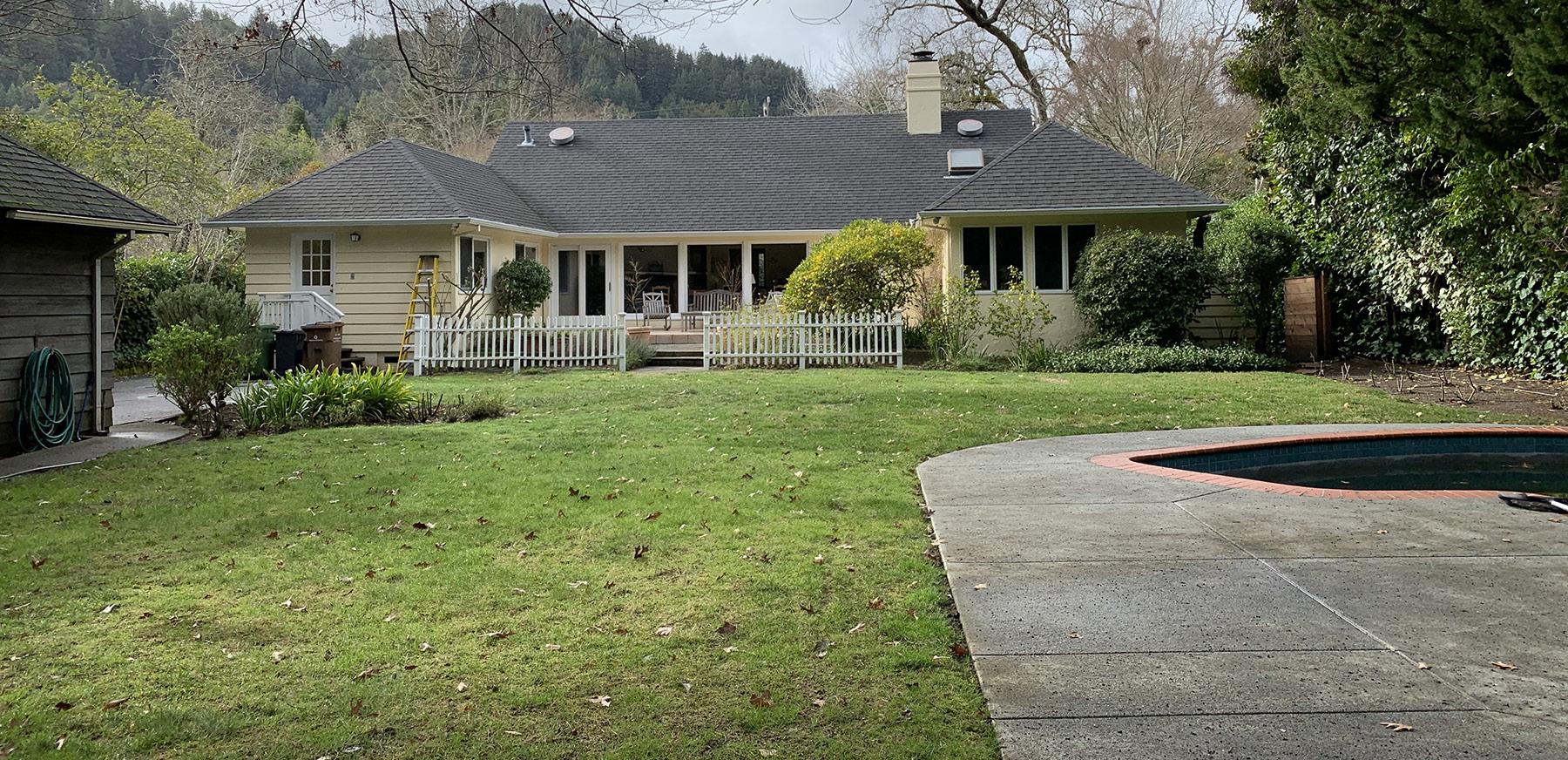
“We are to the point where we’ve gone through a digital revolution, and so customers expect a very clear, professional presentation,” Martin says. “You can usually tell something that was done with the accuracy of a computer and something that was done roughly by hand.”
Considering all the benefits, Branigin recommends charging customers a design fee for the upfront work.
“It also helps us quantify the serious customers who are looking to have something done from the not-so-committed customers,” Branigin says. “We explain to them that we’re about to quantify the design, but then we’ll actually quote the project once we get it to a point that it’s a project they love.”
What to consider
Before deciding on a design software, landscape contractors
Design software experts discuss how landscape companies can use design software to their advantage.A client’s backyard before a new hardscape installation. Eileen Kelly, Dig Your Garden Landscape Design
need to consider their budget in terms of time and money, according to Martin.
“What are they able to spend on design software for their company, and what are the time costs that are going to be required to learn it?” Martin says. “What kind of time do they have to learn a new program?”
Gilbey adds that contractors should also think about what features they’re hoping to get out of the program.
“We always recommend that people look at the software capabilities from any of the solutions and figure out the maximum capacity of that software and the goals they have for technology and their practice,” Gilbey says. “Does it do 2D and 3D design? Does it do material takeoffs? Does it enable you to do job costings? You may not necessarily want to learn everything you can possibly do before you get started, but you at least want to know that your software is capable of getting you there.”
Finally, it’s key to consider the company computers’ capabilities, Gilbey says.
“They need to be very cognizant of the capacity of their computer systems and how they expect to share information once they’re done,” Gilbey says. “Are they connected to the internet? Are they working with a good processor? Is there a video card? Will they be sharing files with people on paper? Do they need a printer where they can print their work? Do they expect to give clients PDF files? Will the software generate PDF files? Things like that really need to be part of that final decision-making process.”
While some companies make incremental changes, Gilbey notes that companies should also think of design software in terms of where they want
their companies to be in the future.
“I would caution people to find solutions that enable the capacity in the future without having to go from one software application to another because that continual change can be very halting to their overall workflows,” Gilbey says.
Onboarding
Once contractors have landed on a software that fits their company, they should prepare for the onboarding process.
“What we sometimes see is that the burden to change, especially if you’re used to doing something by hand, can be hard to overcome, especially with the time demands if someone is running or working in a business,” Martin says. “Not taking the time to learn it and implement it ends up being a wasted opportunity for designers because they’re not forcing themselves to spend the time they need to learn.”
Gilbey estimates that if someone is fully committed to learning the ins and outs
of the software 40 hours a week, they should have it down within a couple weeks. However, he acknowledges that many landscape designers don’t have that kind of time to commit to learning a new program.


“In those cases, they might be looking at about two hours a day that they can commit, and that is probably going to take closer to two months to learn,” Gilbey says. “We always recommend when you’re learning the process to use it on a sample project, so every time you’re learning something, you’re also physically doing it versus only watching a tutorial of it.”
No matter someone’s learning style, Gilbey notes that there is a solution to help learn the software.
“Software providers have online tutorials that allow designers to do self-paced work. You also have the ability to connect with a training professional,” Gilbey says. “We also see a trend called user groups to help each other through the technology. Being able to find your community of fellow users can be very beneficial because even though a trainer is going to show you the best practice way of how to do something, a fellow user might say, ‘I learned that, too, but here’s my little trick.’ Then they find different ways to be more proficient, and they have some other people to lean on.”
Three OUTDOOR LIGHTING TRENDS and How to Sell Them

Homeowners and businesses are continuing to look for ways to expand outdoor living areas. Not only does outdoor lighting significantly increase property value for your customer, but it can also make your business more profitable. Whether you are a seasoned lighting installer or looking to add lighting services to your business, staying up to date with the latest outdoor lighting trends and selling points is essential. Read on to learn about three of these trends.
1. Ledge lighting
Ledge lighting is a great technique to include in your lighting design portfolio. If you’re just starting out, ledge lights are relatively inexpensive and are a great way to light specific portions of a homeowner’s property. They are slim and fit under the cap of hardscapes, typically a block wall or a seating area. If you’re in hardscapes already, use this as an opportunity to add value through additional ambiance and the safety measures lighting brings to an outdoor living space.
2. Shadowing
Shadowing is a technique used to create a dramatic effect in your customers’ landscaping by placing a light directly in front of a plant, tree or shrub to cast a shadow. This uses the natural shadows of the tree to help dramatize an exterior surface. This look can be achieved by positioning the fixture 12 to 18 inches in front of a plant with light cast toward the wall or surface behind the plant—creating its shadow against the backdrop of the house.
3. Water accents
Over the last few years, many homeowners invested in their landscaping, and in many cases, this included adding water features or even a pool. Help your customers enhance these areas of moving water with accent lighting. Highlighting water in motion creates a calming effect that lasts into the evening. Accent a waterfall by stagger-
Staying up to date with the latest outdoor lighting trends and selling points is essential. Here’s how to do it.
ing flood lights evenly in surrounding rocks on each bank and position them to wash across and over the moving water. These three outdoor lighting trends will not only expand and enhance the living space for your customers, they will also give them year-round access and enjoyment to their landscape investment. With opportunities to upsell, outdoor lighting also presents an opportunity to increase your bottom line.
Demo kits
The best way to sell these three outdoor lighting trends is to take the time to prepare a demo kit for your customer. Outdoor lighting demos allow you to show architects, builders and homeowners what outdoor lighting will look like on a property. With lighting, you can’t count on imagination— seeing is believing. This is different from a technical sale, where things are “essential” for programs to run, like sprinkler heads in irrigation. Lighting is visual and emotional; you are trying to change how someone sees their space.
Demo kits will help you convey those emotions throughout the landscape and convert to sales. You can set up a demo for any outdoor space—the façade of a house or outdoor living area or lighting for security purposes.

While you can’t lay out landscape features like trees and ask customers for feedback, you can with landscape lighting, making it an extremely customizable opportunity for them and a great chance to upsell for you. Demos can also help you identify gaps before putting a lighting plan into place, which keeps you from having to add any fixtures (and subsequent costs) after the closing and reveal.
Brad Lipsey Senior Category Manager of Outdoor Lighting SiteOne Landscape Supply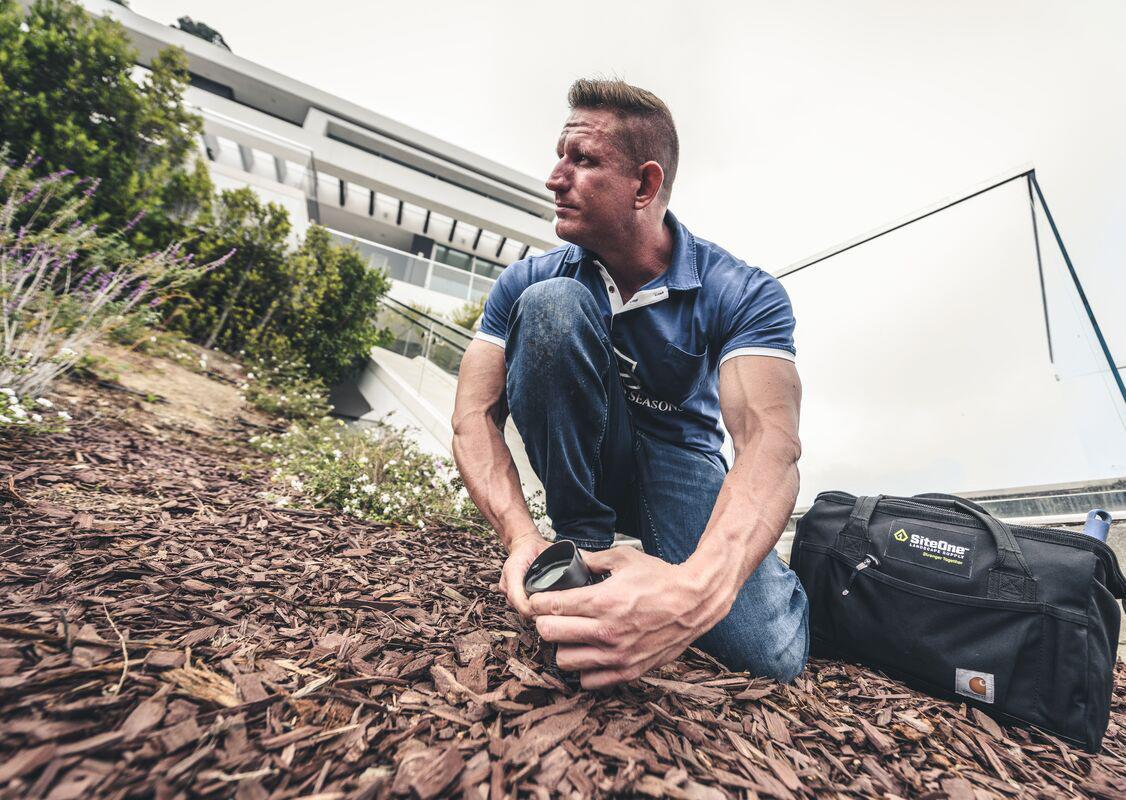
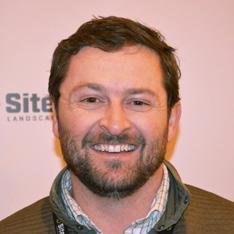
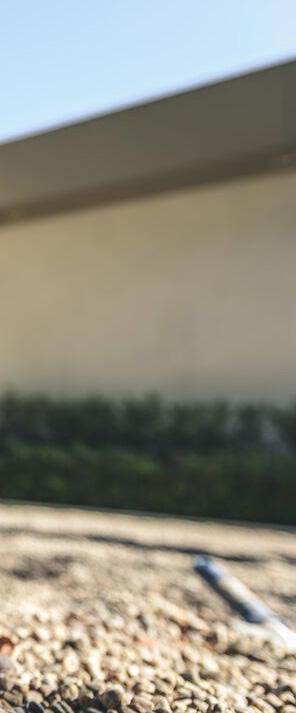
FAB From Drab to
The green industry is more than just mowing lawns and eliminating weeds. Landscaping can be a form of art, and El Paso Artificial Grass and Turf was able to transform a client’s lawn from “a graveyard-looking backyard” to a bright green and lush paradise.
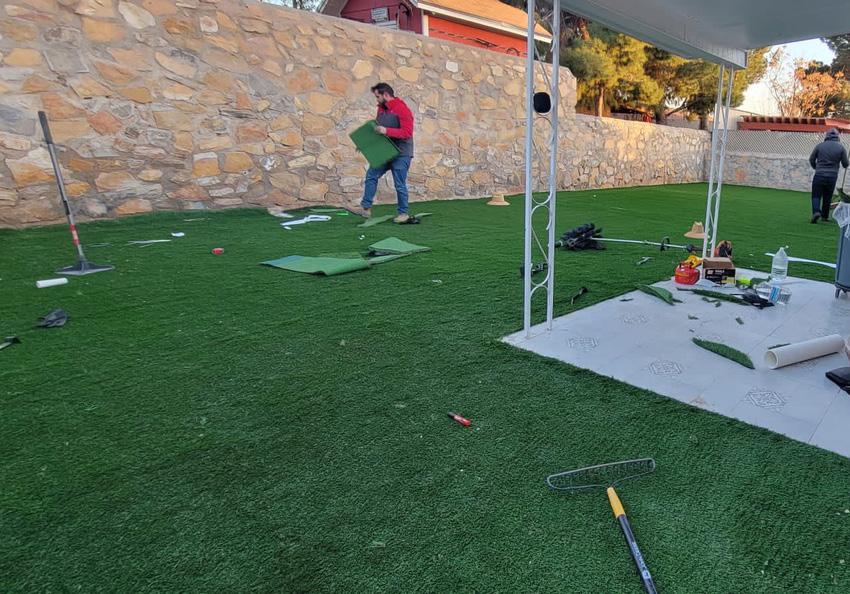
El Paso Artificial Grass and Turf is owned and operated in El Paso, Texas. The business is run by Travis Boyle and was founded in 2012. The company has installed artificial grass for hundreds of projects now: residential lawns and putting greens in large commercial spaces. Crew members have more than 50-plus years of combined industry experience and are very passionate about installing quality, durable and beautiful artificial turf surfaces.
The goal for this project was to create a landscape that was both functional and beautiful. This client has children and a dog, and he wanted an area where his kids could run around and enjoy the outdoors in a safe environment. He also wanted something low maintenance so that he wouldn’t have to stress over the care of the lawn.
El Paso is a desert landscape, and water costs can be
expensive, and yet, the client decided that he did not want to xeriscape (a style of landscape design that requires little or no irrigation) with rocks because that wouldn’t allow his lawn to be a functional area for his children to play.
El Paso Artificial Grass and Turf won the job by strategizing its use of social media with an ad campaign it ran on Facebook. The client then visited the company’s website and commented on its page about how professional the artificial grass installments looked in comparison to other grass installers in El Paso. The client also liked that the estimation process was fairly simple and that his initial contact with the team was friendly and professional.
Three crew members worked on this project, and they had a three-day timeline to complete it. The five steps to completing this job included:
1. Crews prepared the 1,610-square-foot surface of the lawn, which required the use of an excavator and digging 4 inches deep into the ground.
The story of how El Paso Artificial Grass and Turf transformed a graveyard-looking backyard into a bright green paradise.The crew installed artificial grass to the prepped surface of the backyard. El Paso Artificial Grass and Turf
2. Crews added 20 tons of aggregate to the surface of the lawn and used a compactor tool to create an even surface for the artificial grass.
3. The team laid down a weed barrier to prevent weeds from reaching through the surface.
4. The crew laid down 1,600 square feet of artificial grass on top of the properly prepared surface.
5. Finally, for the final touches, the team added infill to the artificial grass using a power brush.
One of the biggest challenges with this project was that the client had originally picked a style of turf based on samples available during the estimate, but in the middle of the project, Boyle realized that the company’s local supplier was out of stock of the sample his client wanted. So, Boyle called around to see if a different supplier had a similar sample of turf, and he was able to find one. This supplier was able to express ship the turf to the jobsite within two days, which helped the team stay on the previously proposed schedule.
The client was also worried about the artificial grass having visual seams. To address this potential issue, El Paso Artificial Grass and Turf used a plastic-


fex seaming tool from Superseam.
Another unexpected issue crews ran into during the project was their subbase compactor becoming inoperable. They had to find a last-minute rental at a local supplier. Boyle noted that this was a lesson in always having a backup option for critical tools that are needed on the job. Now, El Paso Artificial Grass and Turf has a relationship with a local tool rental company and a better sense of its equipment and tool options.
The company plans to work with this client again in the future.
“The client loved the outcome so much that he has hired us again to add artificial grass to the front yard next month,” Boyle says. “Also, one of his
neighbors has also asked us to help them with their backyard after seeing the outcome we had for our client.”
Overall, Boyle’s favorite part of this project was the inspection process. During this process, clients have the opportunity to inspect the company’s work and make sure they are 100 percent happy with the job. During this particular inspection, the client and his kids were stunned at how natural the artificial grass felt. They were excited about being able to play with their dog in the backyard.
“This was a very satisfying experience knowing that we were able to help the family make more use of their property,” Boyle says.
RYAN PATERA
Co-owner, Patera Landscaping, Omaha, Neb.
Green Industry Pros: Tell me about your company.
Ryan Patera: It’s my brother Jeff and me, and then our other brother was in there as well, who is now a doctor. In 1996, my brother started mowing grass. He’s seven years older than me, so we started just mowing neighborhood yards, but 2005 is when it turned into a mature landscaping company. My brother and I had been mowing lawns long before that. We started with one crew of two to three employees and us. When I joined on, we were really focused on getting rid of all mowing. In the last three to four years, we’ve opened that back up so that we have more of a commercial presence. We primarily do residential custom design and installation. That would account for 80 percent of what we do during the season. About 20 percent of it is commercial, mowing, maintenance and landscaping. We do snow removal for commercial. As far as number of employees goes, we probably keep on 20 during the winter, and we grow up to 75 to 80 during the season.
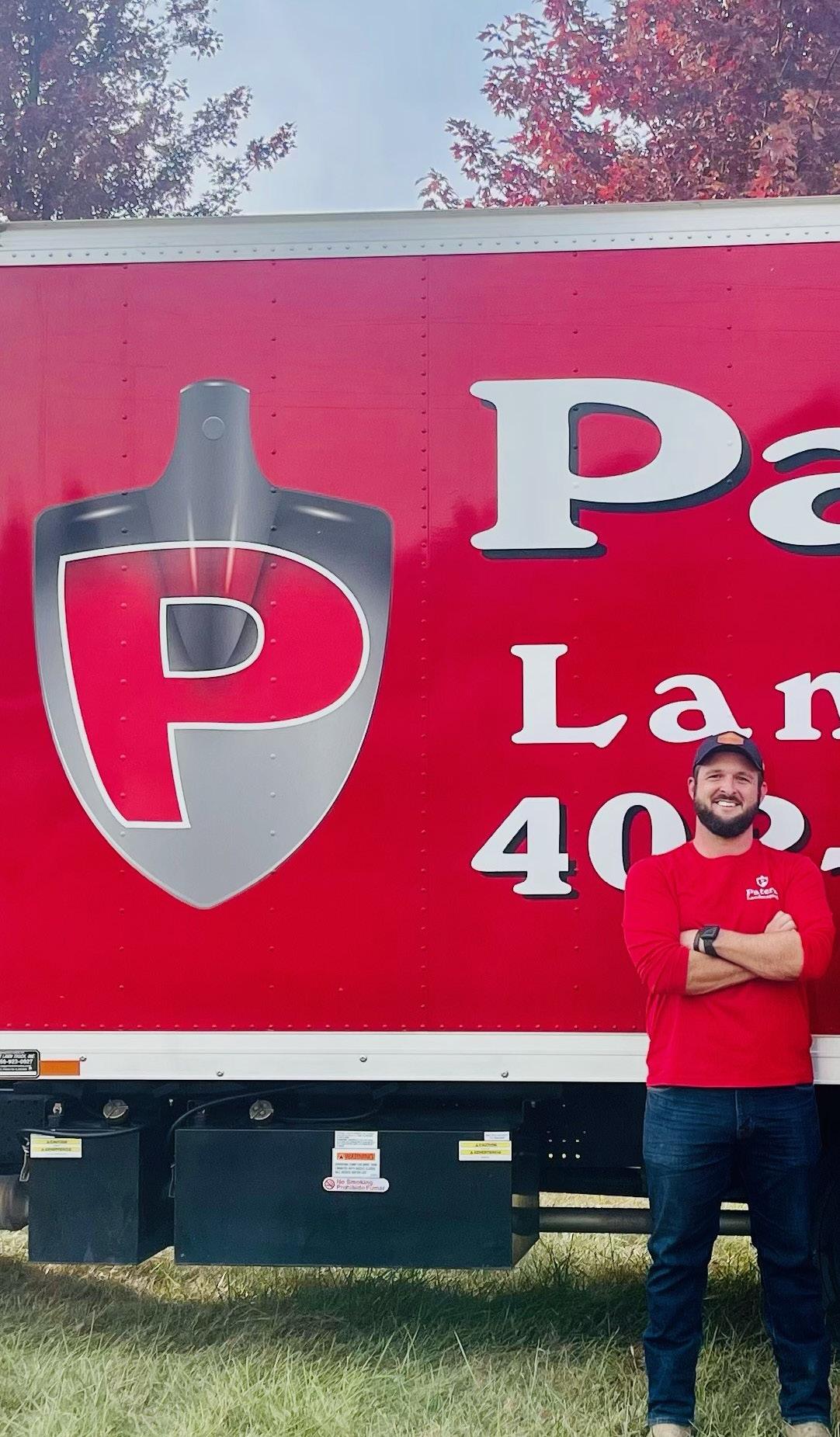
Green Industry Pros: Did you always know that you wanted to be part of the green industry?
Patera: Even when I was younger, I was helping where I could with mowing and picking up leaves around the neighborhood. And then, for a little bit, my brother and I were both mowing on our own accounts, and that was kind of goofy, so we teamed up. That’s all I’ve ever done. That’s all he’s ever done. So, we both knew we wanted to be doing landscaping for a career.
Green Industry Pros: What have been some of the successes your company has encountered over the years?
Patera: We’ve had the success year over year trying to grow, and we’ve done a pretty good job of that. In the last seven to 10 years, we’ve seen more growth than the first seven to 10 years. That’s in part because we’ve gotten more systems in place. When you’re young, and you’re showing it off, you’re doing it with your buddies or whoever can help out for a day or two. And when we could take that leap of having designated foremen and supervisors and office staff, that’s when things can actually grow, and we could perform better service for
ourcustomers because we got a lot more talented people that are doing it for a living compared to a little summer gig. Ryan Patera (left) and his brother Jeff Patera (right).
Green Industry Pros: On the flipside, what have been some of the challenges you’ve encountered?
Patera: You hear a lot finding staff, but I don't know that that’s necessarily the case. I could fill a staff position really quickly, but finding talented staff and finding people that want to grow in a company is more difficult. We tried to combat that with having good training. We’ve had success stories where a guy was No. 3 on a crew, and he worked his way up, year after year, learning what to do, and we put him in charge
of a crew and he’s been with us for almost eight years. We put a lot of trust into our staff training, finding people that are willing to work and people that are willing to learn as they go.
Green Industry Pros: What’s your favorite tool to get the job done?
Patera: We’ve been able to benefit greatly because of the SingleOps software that has helped us streamline our estimating, tracking crews, their numbers, all that kind of stuff. That would have been something that we
could have probably done a little bit sooner and gotten great benefit out of it.
Green Industry Pros: Building on that, what advice would you give to other landscape pros just starting out?
Patera: For somebody that’s looking to grow, rather than taking over everything from answering the phone to installing on the walls, take that hat off, hand it to a guy and say, ‘Hey, you’re in charge of this.’ Have trust in other people, and they might make mistakes because that’s what happens. I know a lot of people feel like they can’t have somebody else do something because they might not do it as well as they can, but you can end up being a lot more productive and get a lot more done in your day if you put the right people in place to do half the stuff for you.
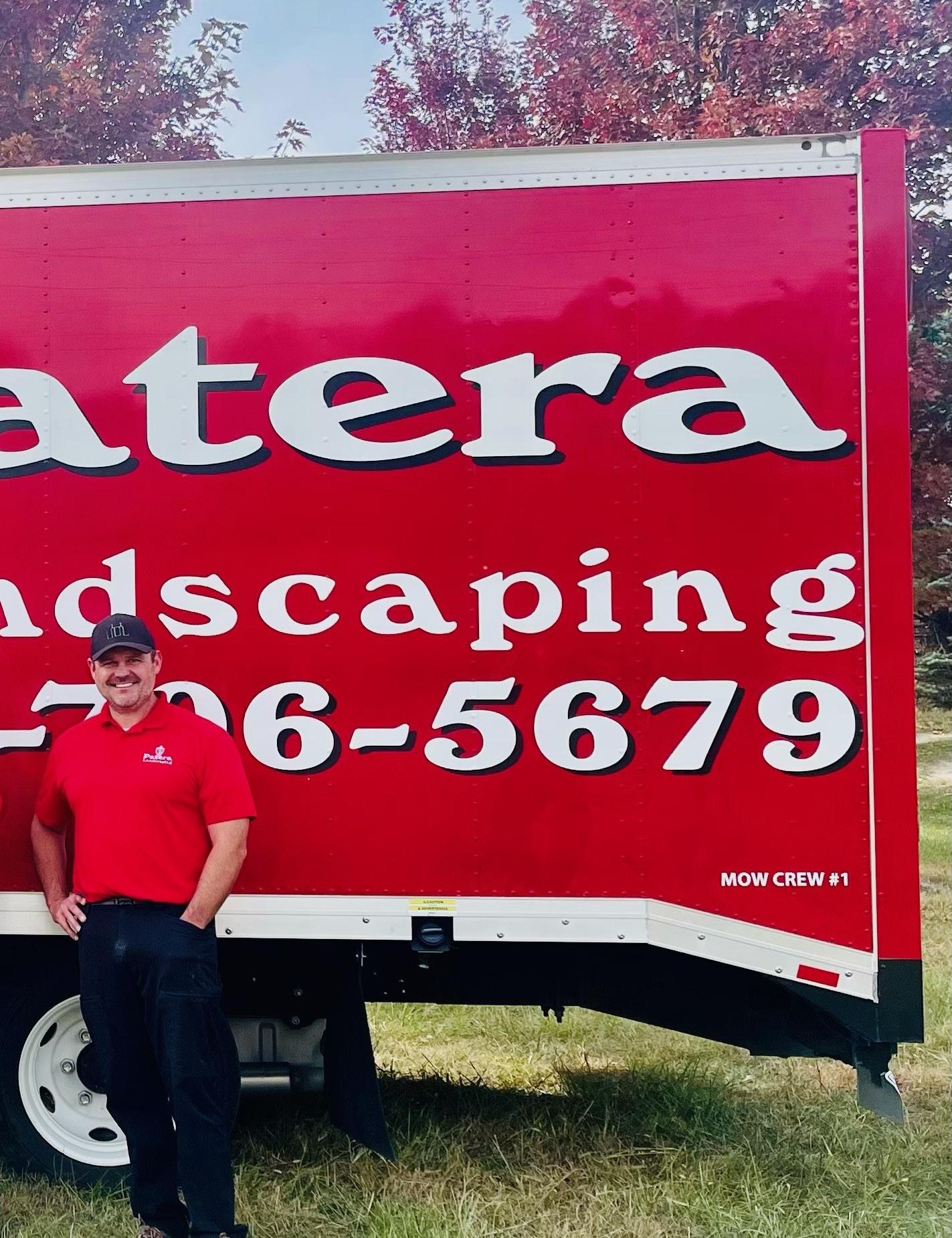
Green Industry Pros: What’s your favorite part about being in the green industry:
Patera: The easy answer is to see the finished product, but truthfully, it’s working with the guys being able to give them a career, being able to have guys come back year after year excited and learning the new things that we can do. It’s developing people where day one, they might only know how to put down mulch, but three or four years later, they’re building beautiful patios and hardscapes and things like that. So to me, it’s being able to train somebody, being able to see them progress, being able to see what they look like when they first came in versus now and the pride they take in their work.
Green Industry Pros: And finally, what kind of things do you like to do outside of work?
Patera: I’ve got two kids and a wife, so anything I could do with them. If I can take them fishing or hunting with me, that’s going to be my No. 1 choice every time.
Ignite’s Snow Pusher
Ignite’s Snow Pusher helps snow contractors contend with big winter storms.
They are compatible with skid-steer loaders, compact track loaders and compact tractors with a universal quick attach interface. The Ignite Snow Pusher can also turn heavy snow into a lighter lift with faster and more efficient snow pushing capabilities.
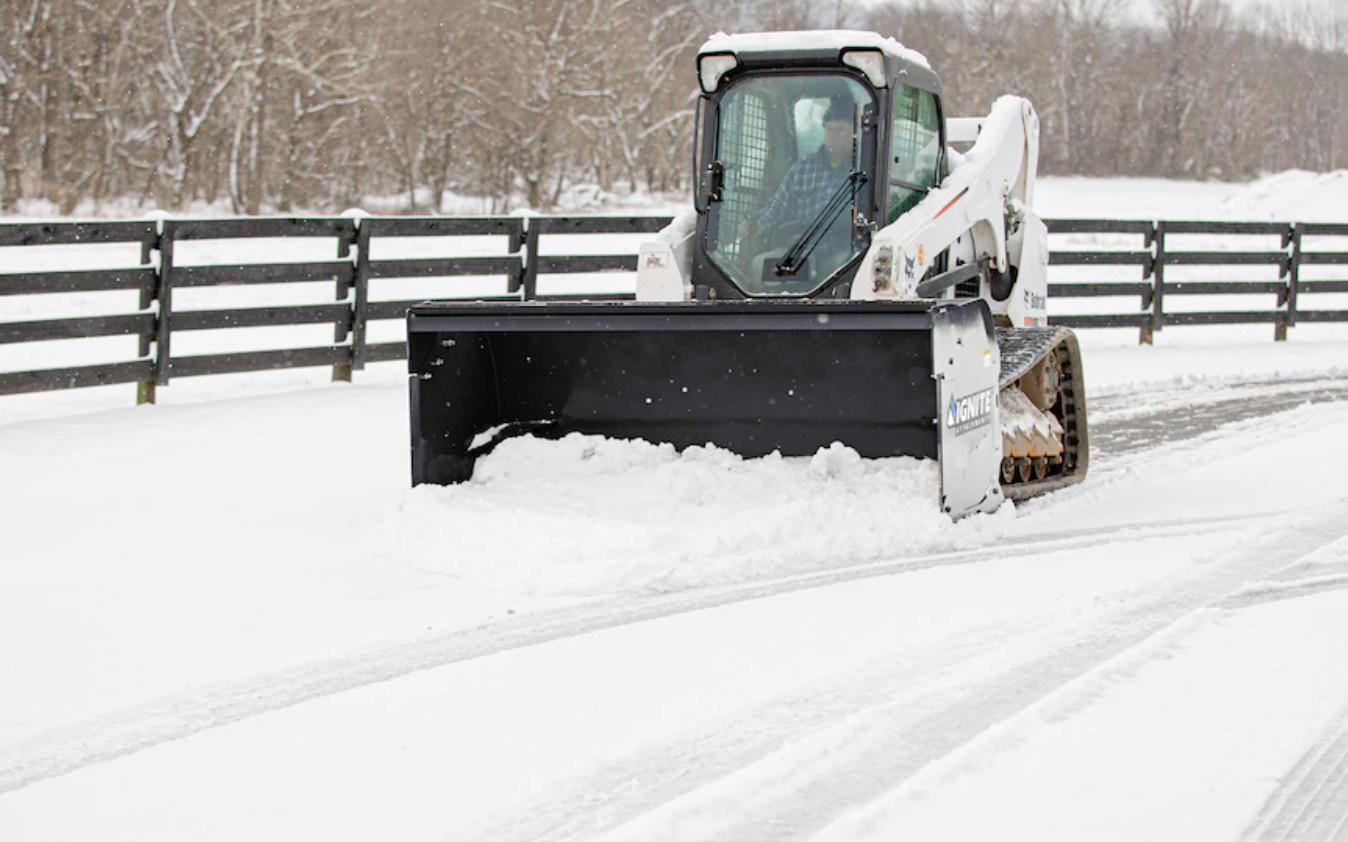
The Snow Pusher includes:
• A corrosion-resistant finish to stand up to harsh winter conditions
• Enhanced scraping ability via an 8-inch reversible and replaceable rubber cutting edge for long-wear surface protection
• Optional backdrag kit to pull snow away from buildings
https://gpros.co/eck9la
Husqvarna 550iBTX Blower
The Husqvarna 550iBTX Blower delivers a blow force of 21 N in the battery-powered commercial space. An integrated system, a highcapacity backpack battery and low vibrations allow users to work in public settings, even in noise-restricted areas. Additional features include:

• IPX4 weatherproof
• Continuous boost mode and cruise control
• Efficient brushless motor
• Lithium-ion power
• Low noise and zero emissions
• Key pad with battery status and running modes directly on the handle
https://gpros.co/lg7fnd
Mecalac Excavator Boom Update

Mecalac’s 7MWR offers a revolutionary design, weighs up to 16,204 pounds and is lower to the ground, making it easier and safer for the operator to get in and out. The design also improves accessibility for the operator, with direct access to the cab and to the fuel tank from the ground. At the same time, the 7MWR has a high ground clearance to reduce the risk of undercarriage damage from obstacles on the ground. While featuring an exceptional swing diameter, the compactness enhances in-turn mobility in narrow spaces with four steering wheels. Despite its compact size, the 55.4-kilowatt (75-hp) machine can lift as much as 3 tons up to 3 meters (9.8 feet). The company’s patented hydraulic quick coupler also enhances safety by allowing the operator to control it from the cab, while the bracket design makes it virtually impossible for the tool or bucket to detach while in operation.
https://gpros.co/ksanzwGreenzie 2.0 software
Greenzie launched its 2.0 software for the 2023 mowing season. There will also be later updates in the 2023 season, including the addition of dynamic handling of slopes in real time, enhanced job reloading features, multimower coordination and record, repeat and live mowing progress.
From Greenzie:
• Job saving and reloading: Map an area once and mow all season with the press of a button on an easy-to-use interface with no app download required.
• Job continuation: Mower or job interrupted? Pick up where you left off easily.
• Advanced perception updates: It features a machine learning model with traffic cone detection in addition to the existing redundant, ever-improving rugged obstacle detection sensor stack.
• Improved turns: It uses a model-predictive controller, a robotic guidance system that accounts for wet grass, dusty conditions and won’t rut the lawn.
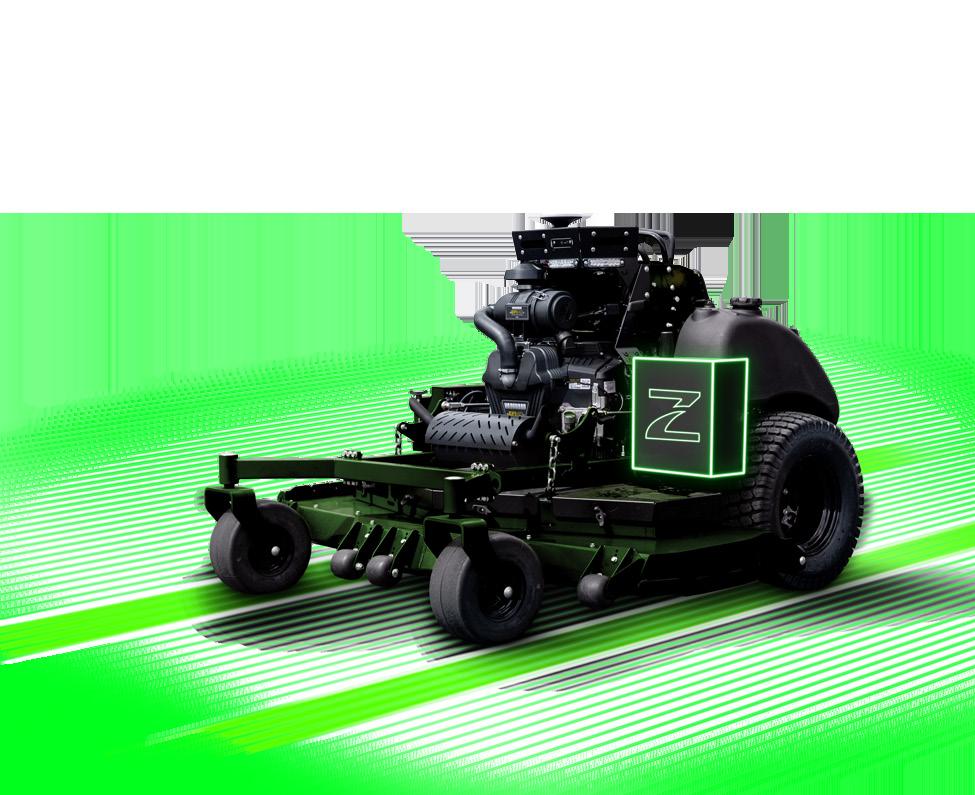
• Enhanced safety: GPS jump detection, compensation and advanced sensor health checks are included.
• Improved dynamic local planner: This feature is for more efficient Y-turns and vehicle behaviors when the mower encounters unexpected obstacles.
https://gpros.co/51753j



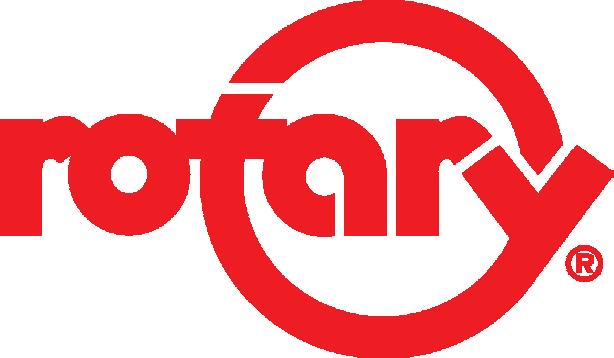

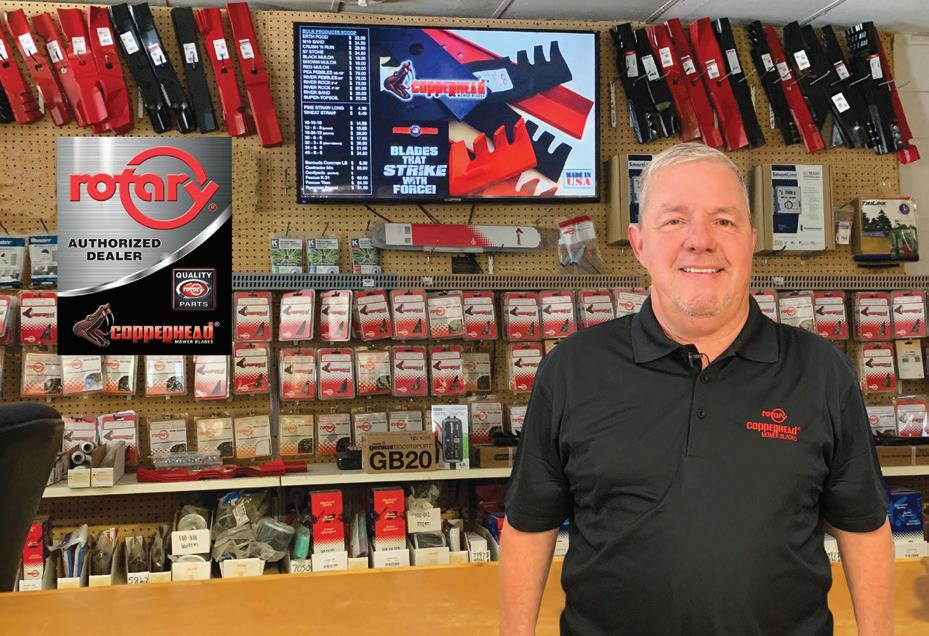

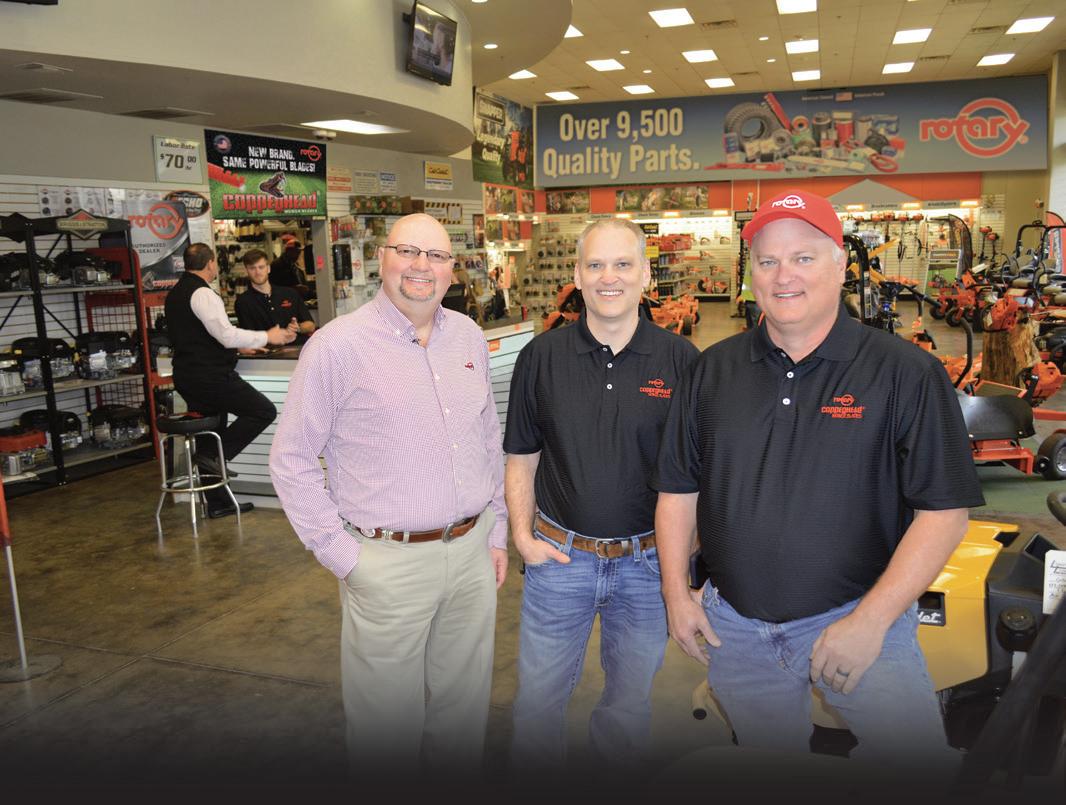

Pro battery Built for work
The innovative STIHL 135 platform of professional battery-powered tools features some of the same proven-tough components used in our legendary gaspowered models. With a product line as diverse as the jobsites you maintain, STIHL professional battery tools set the new standard for power and performance.

